
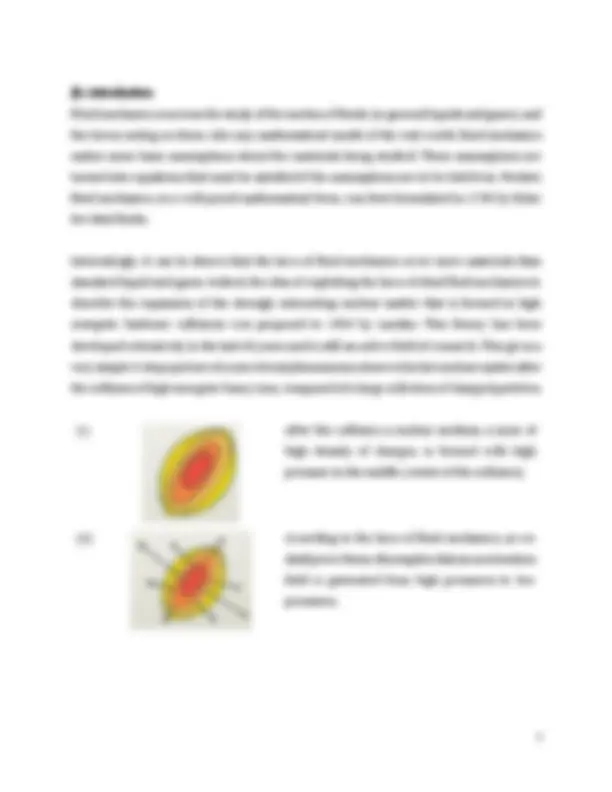
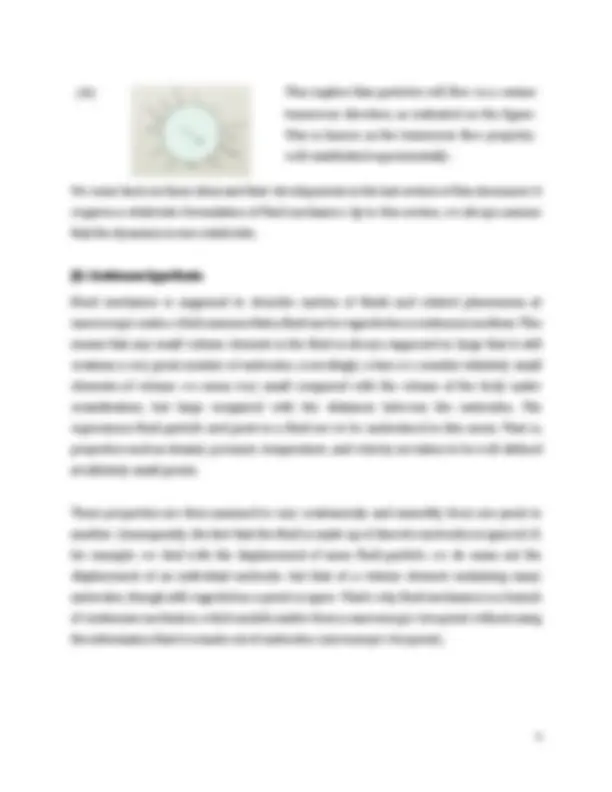
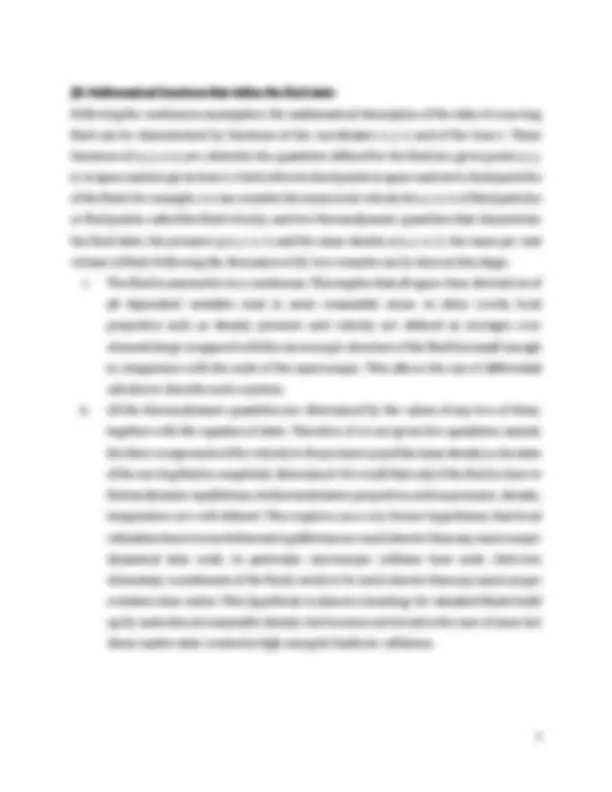
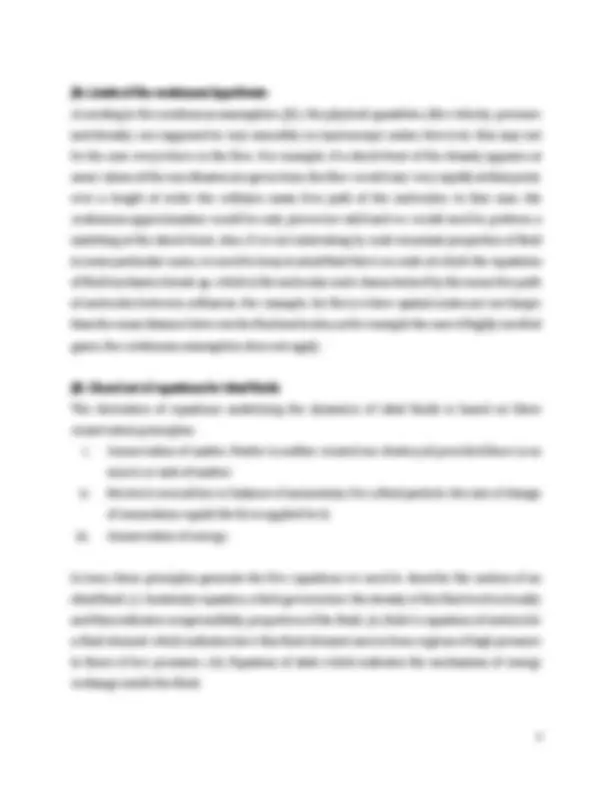
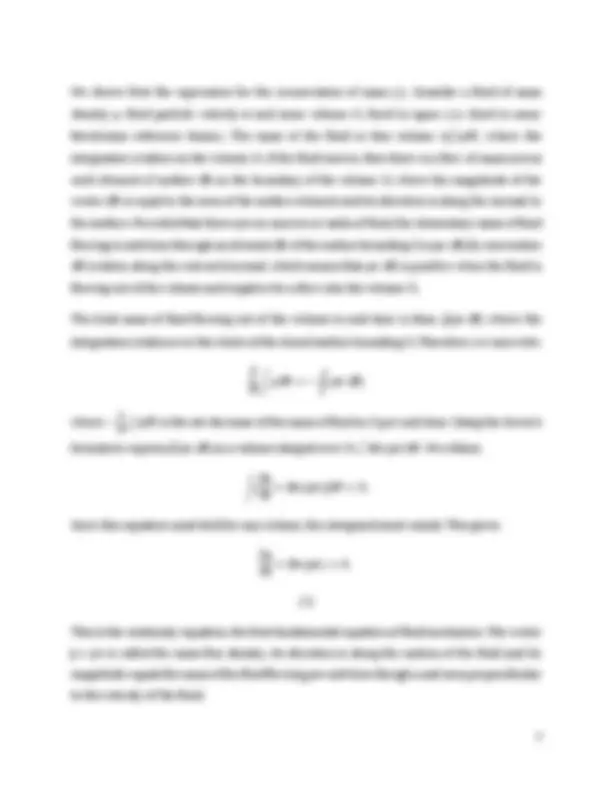
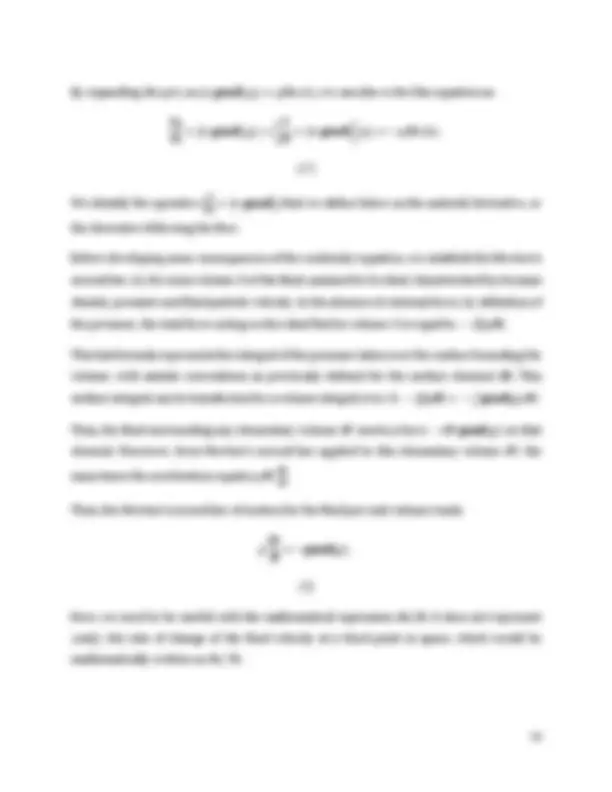
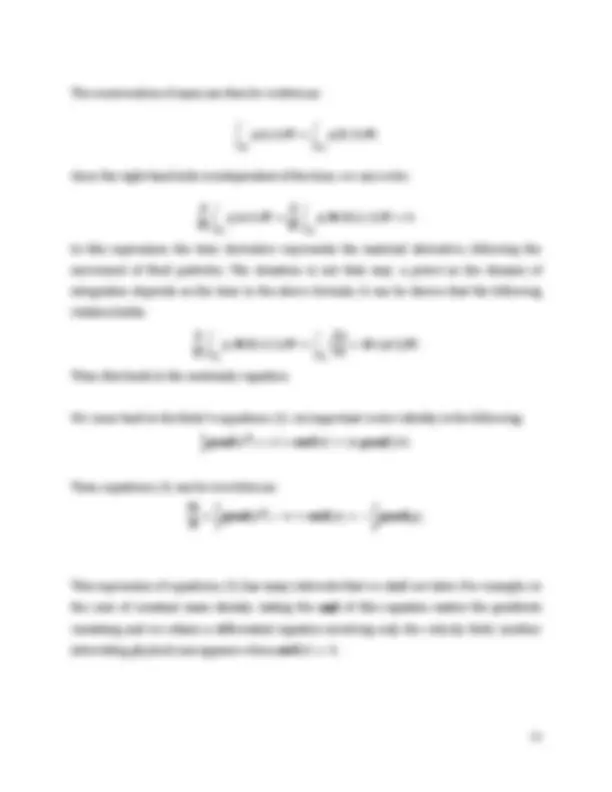
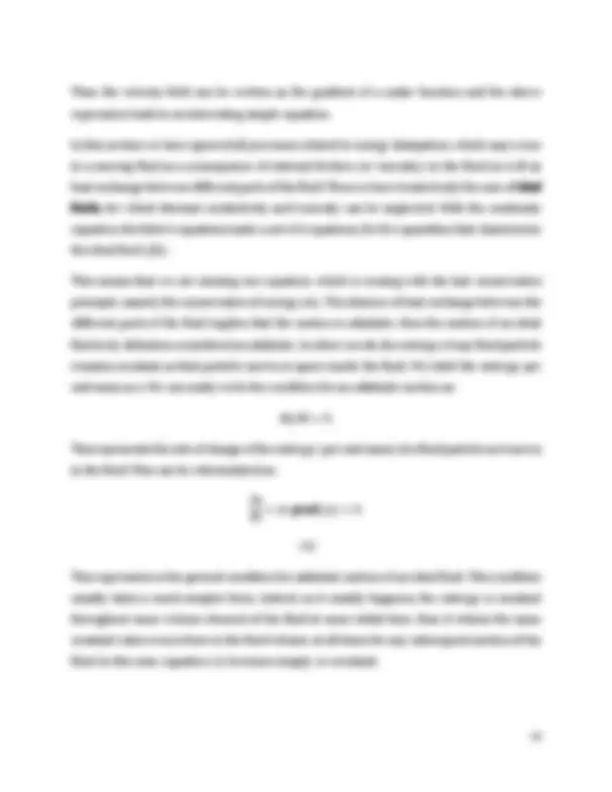
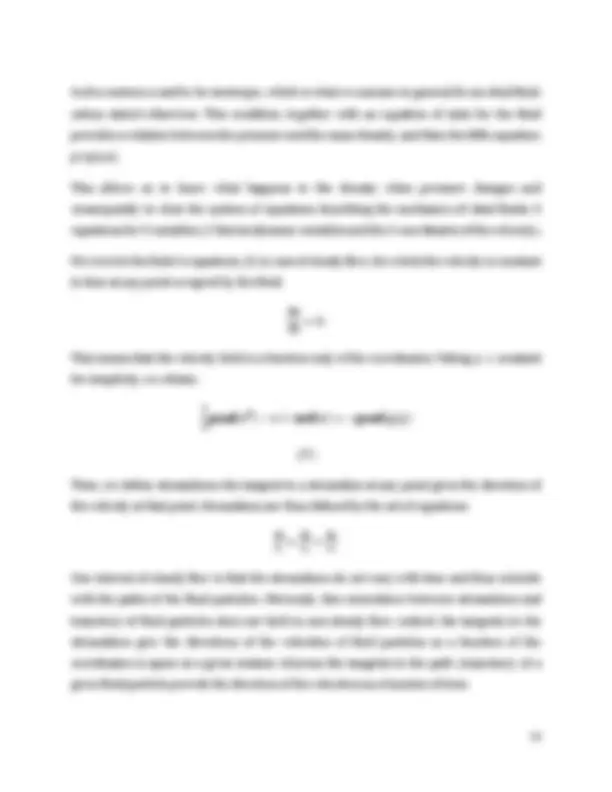
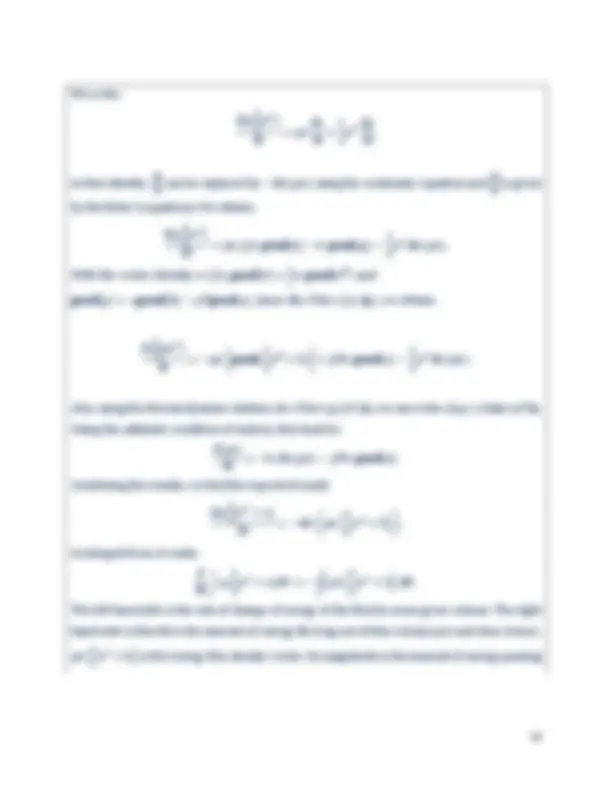

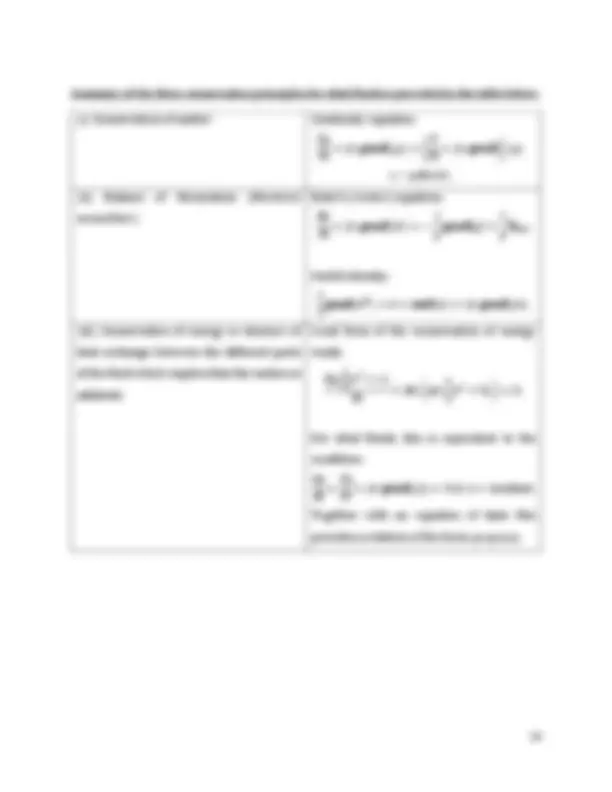
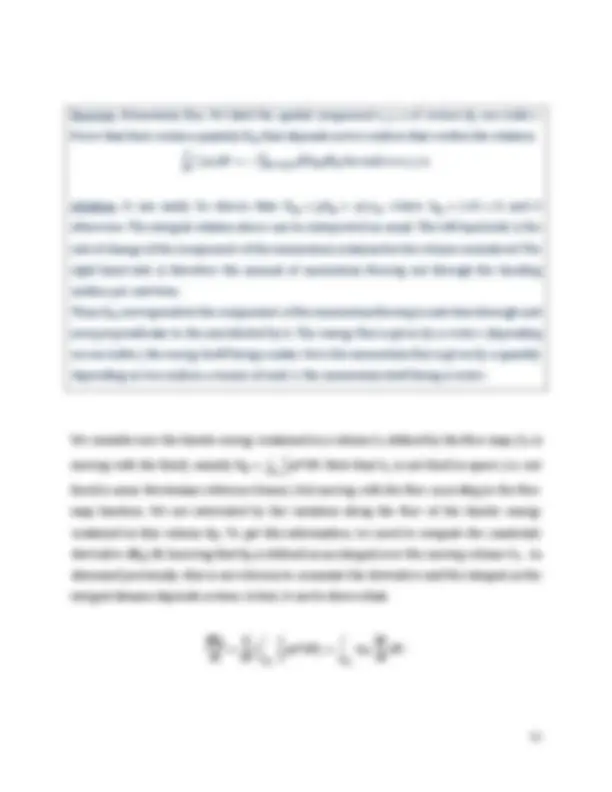
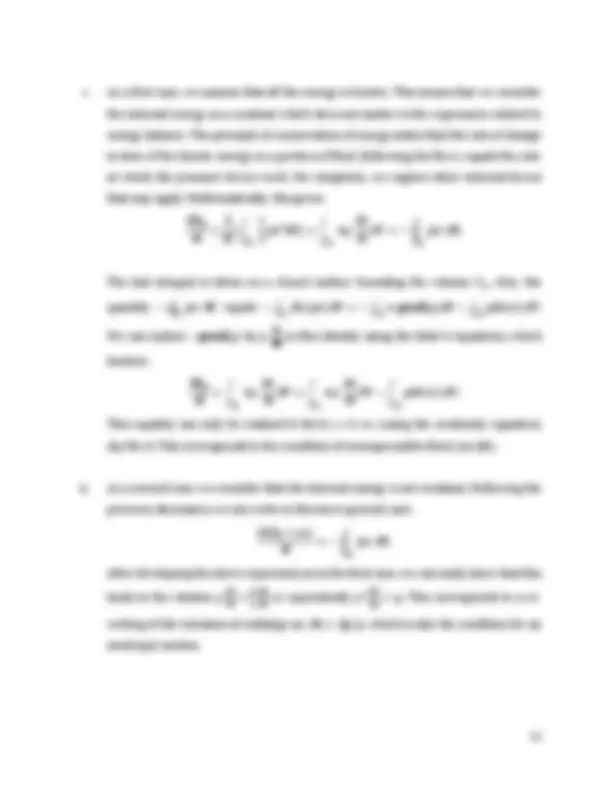
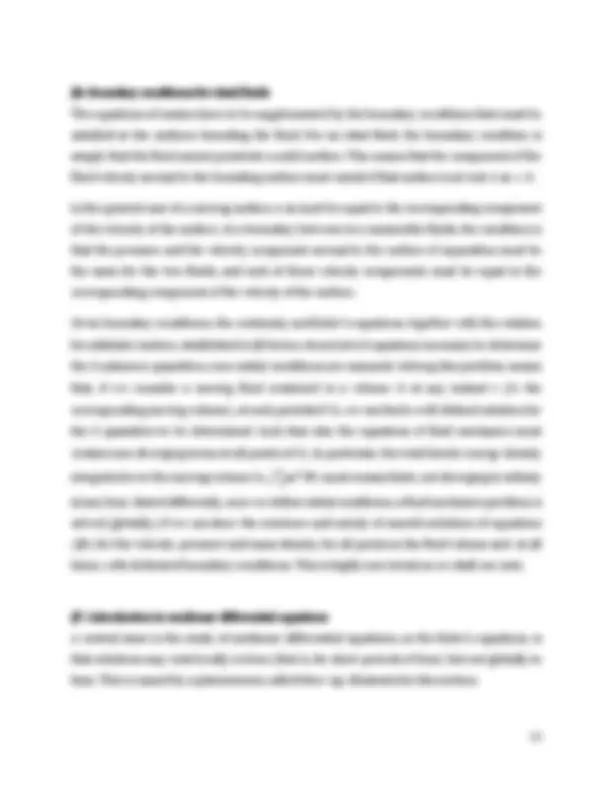
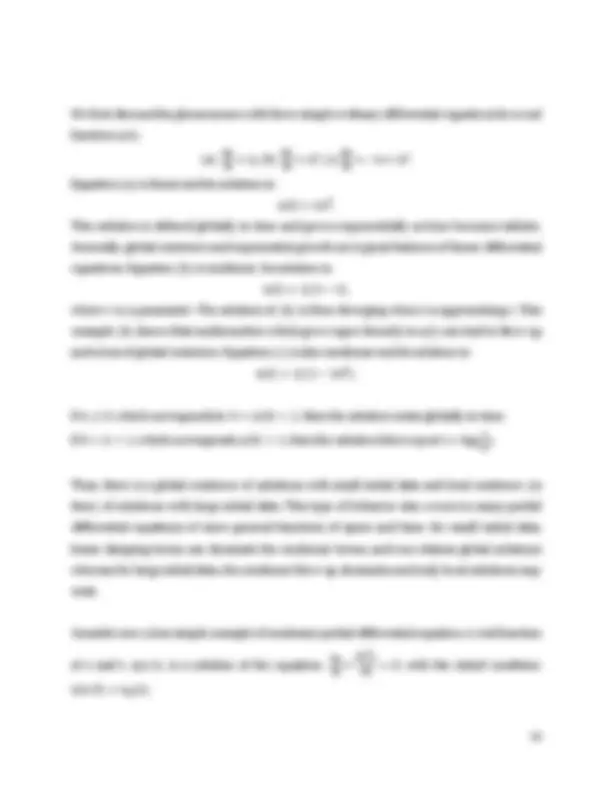
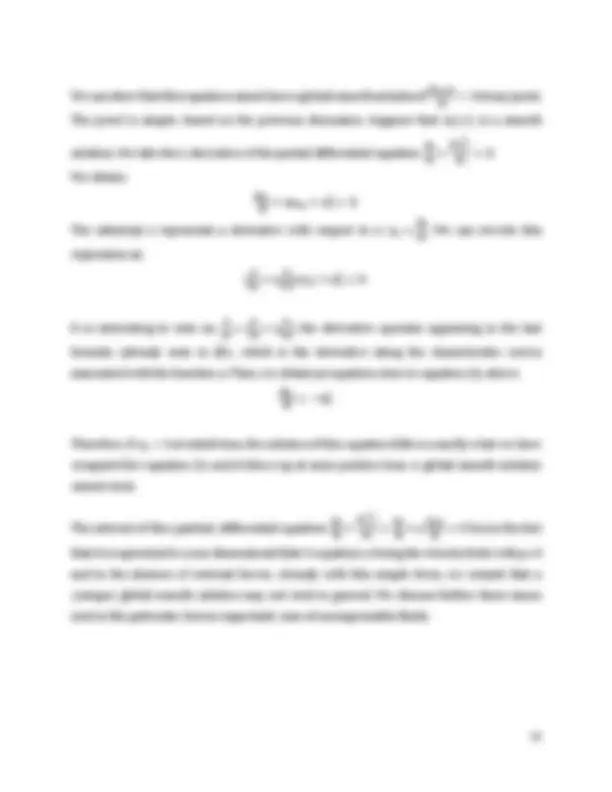
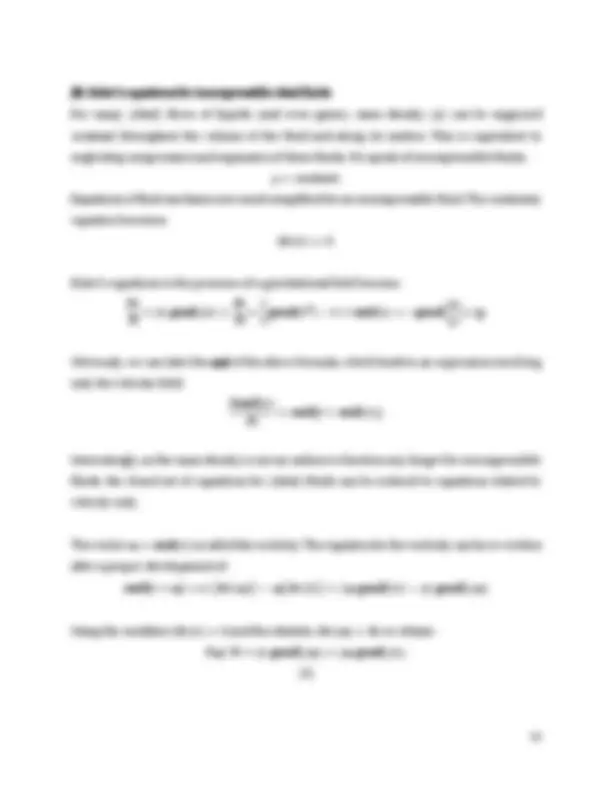
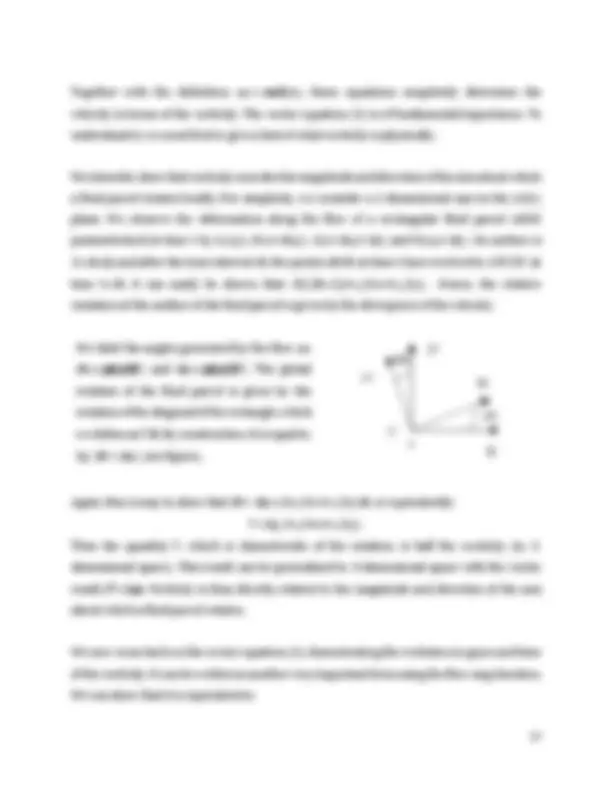
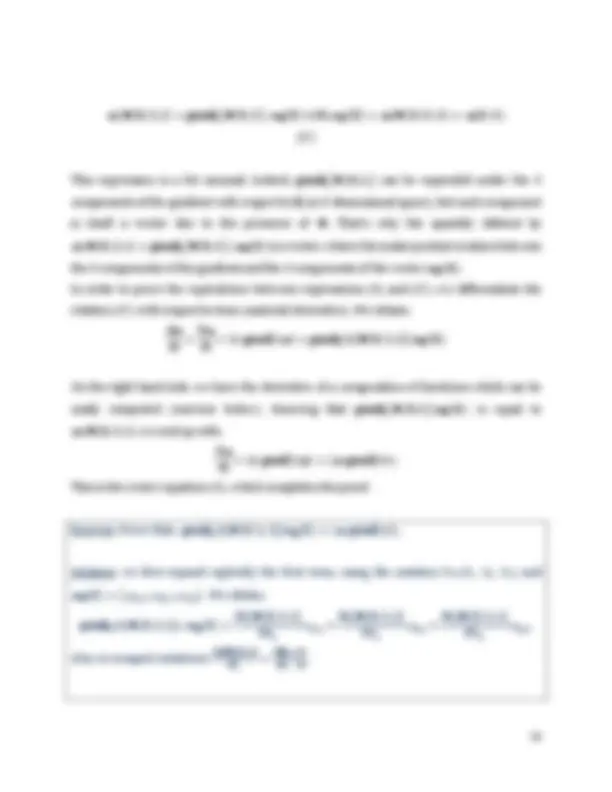
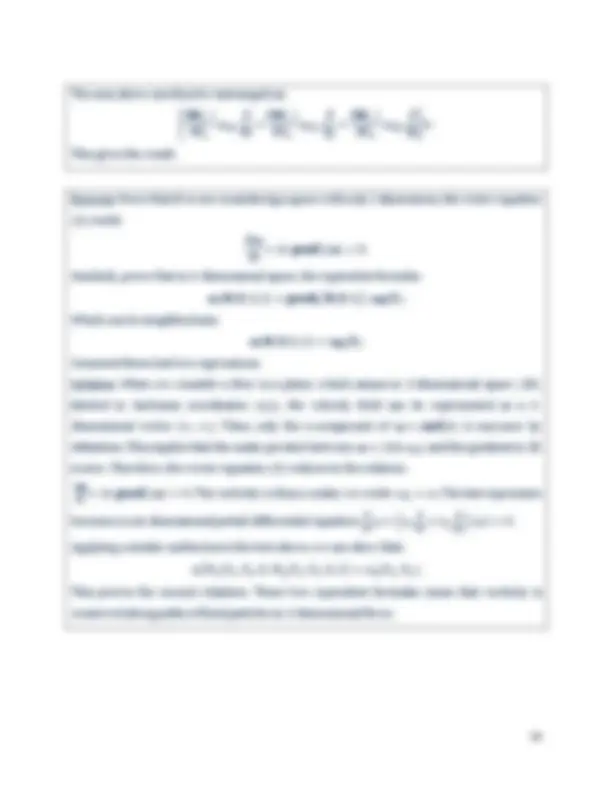
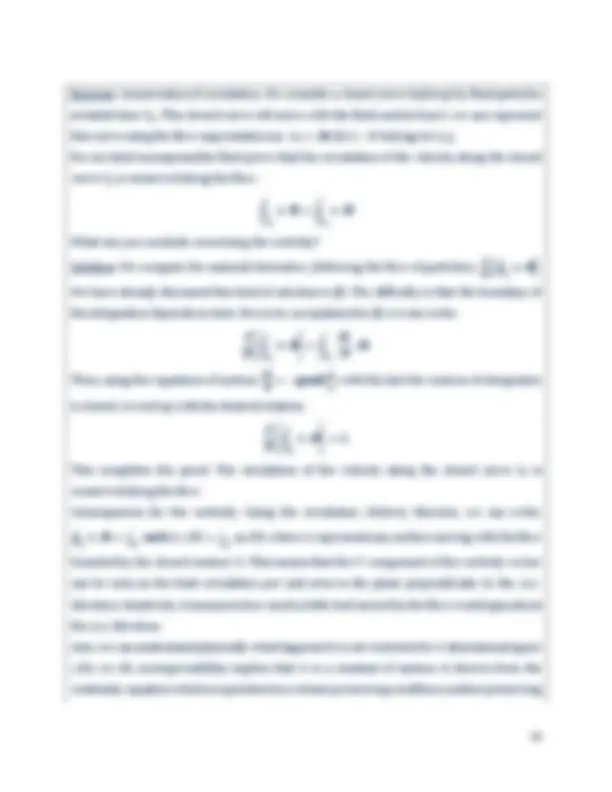
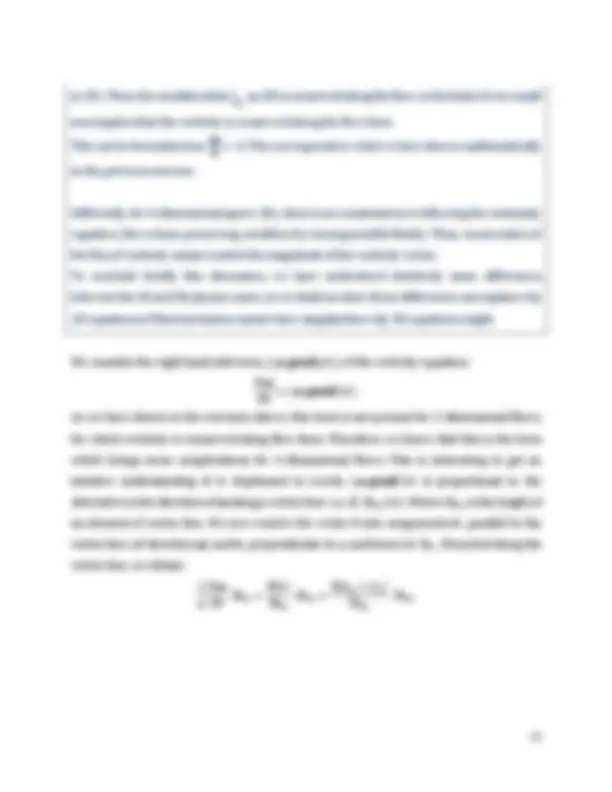
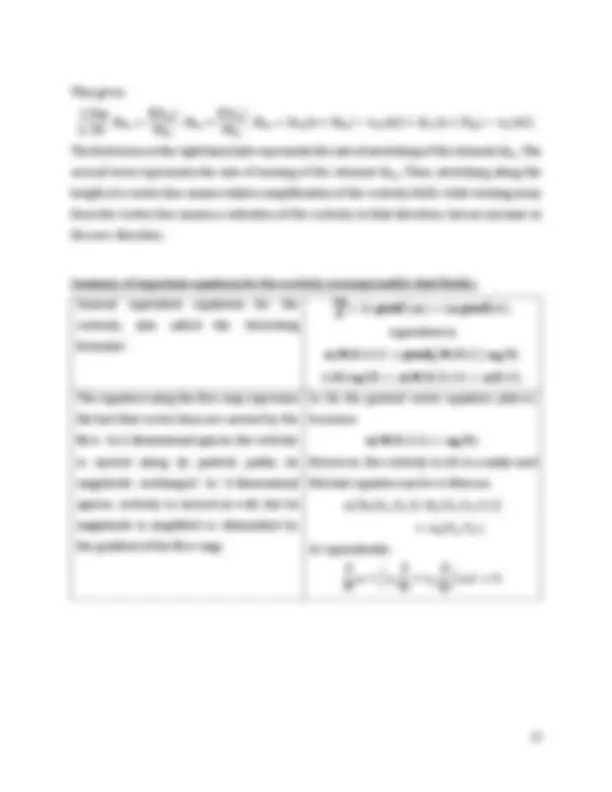
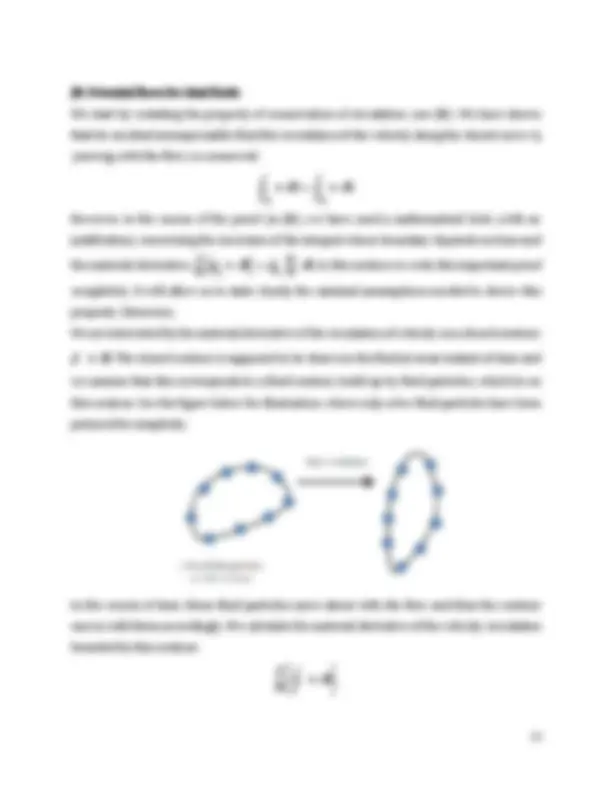
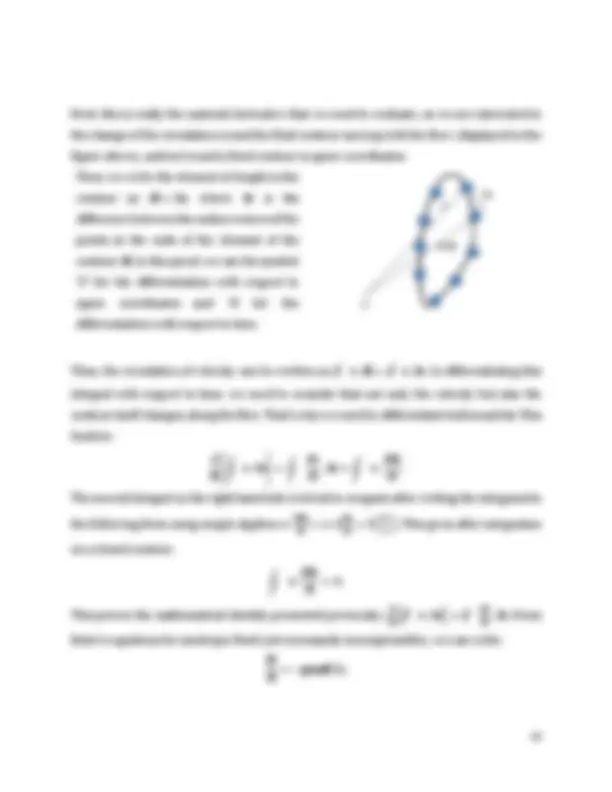
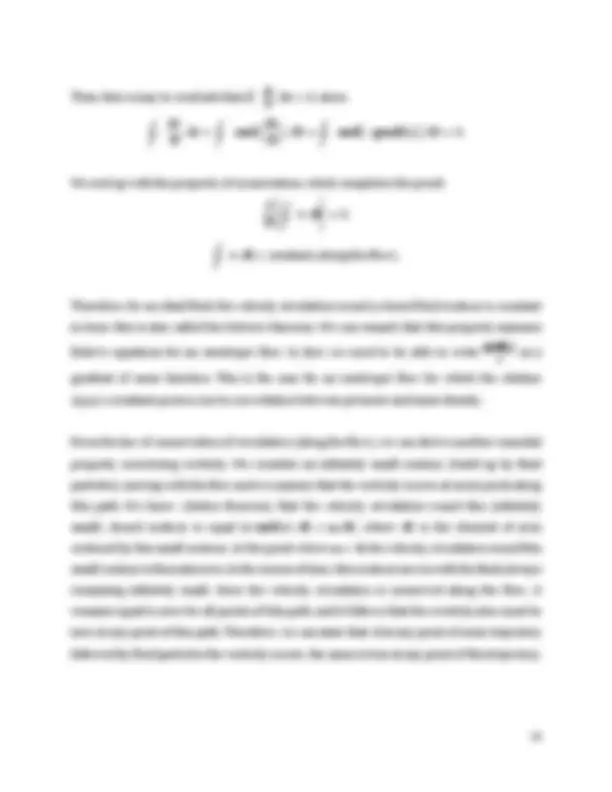
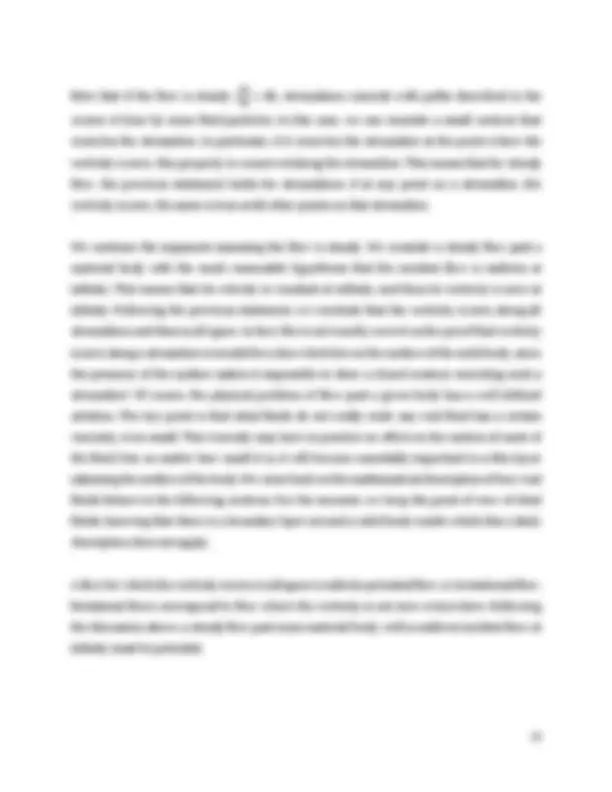
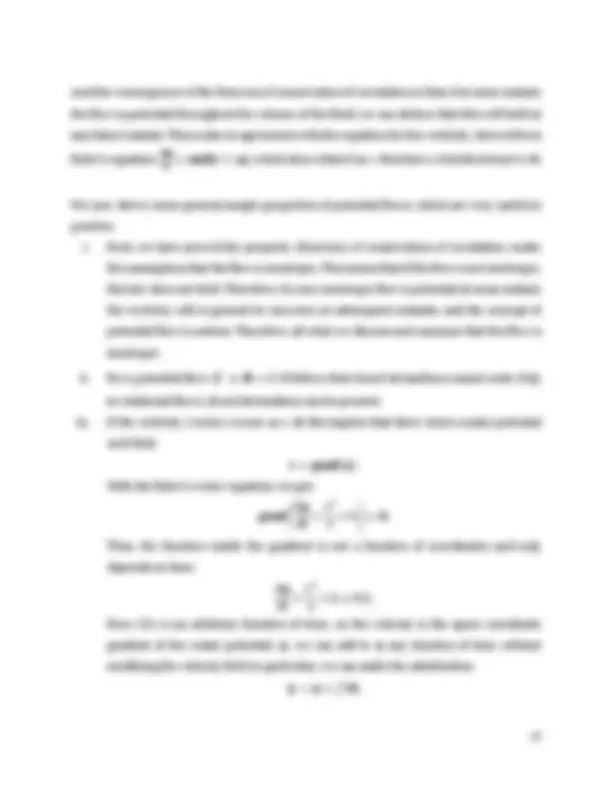
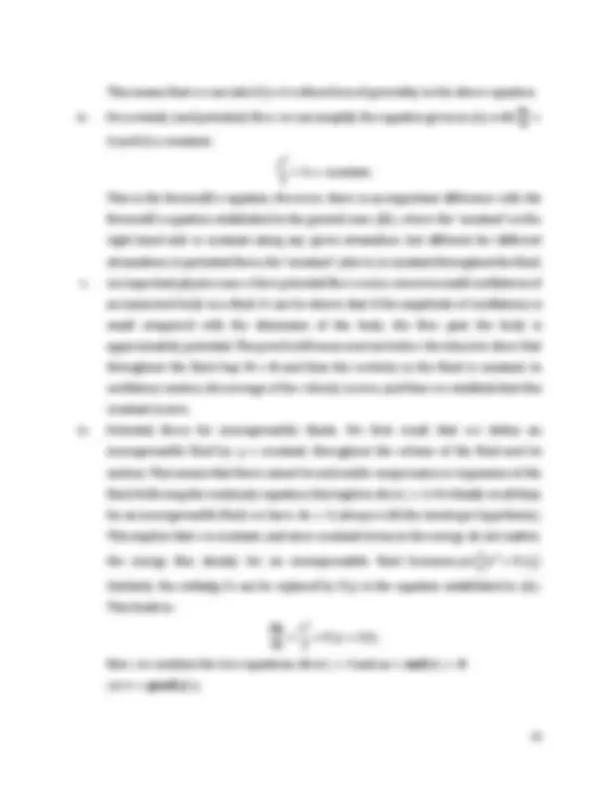
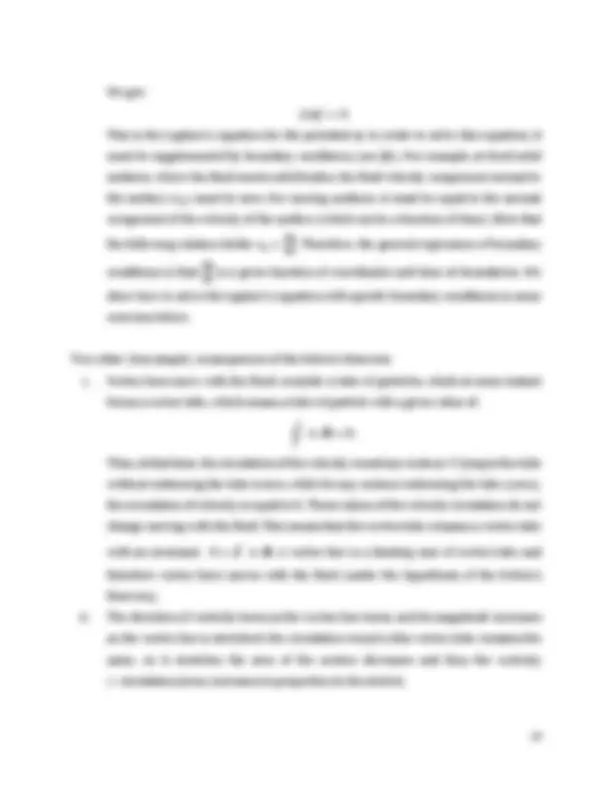
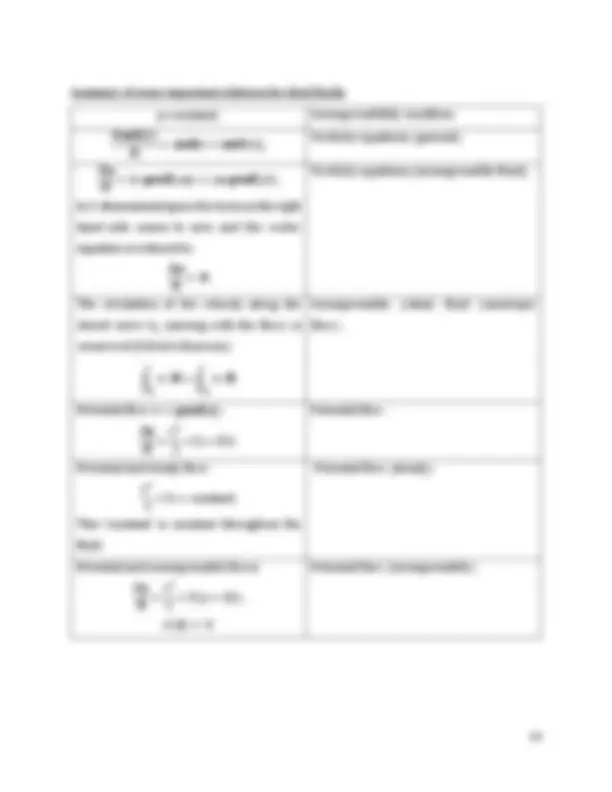
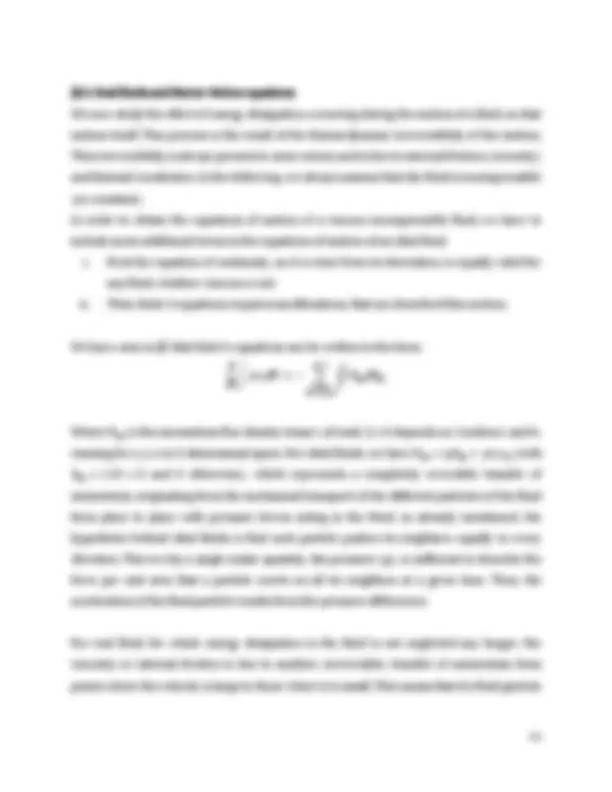
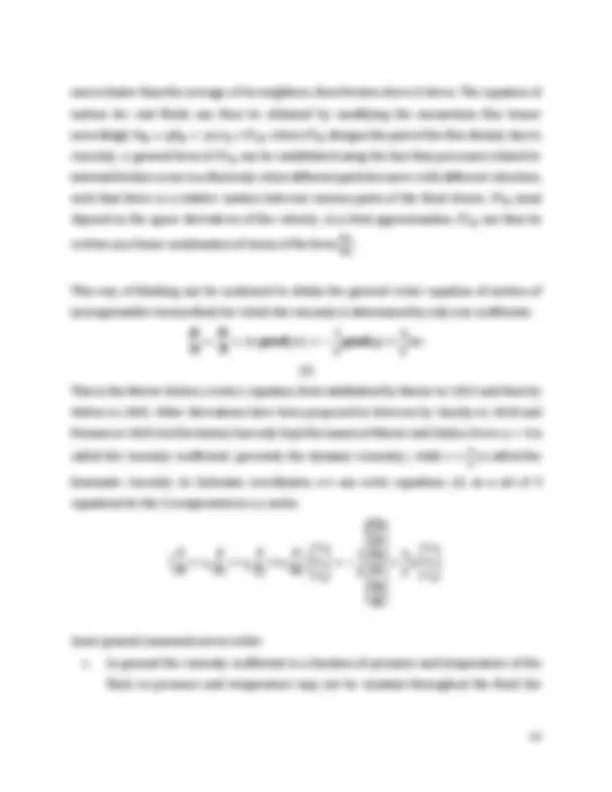
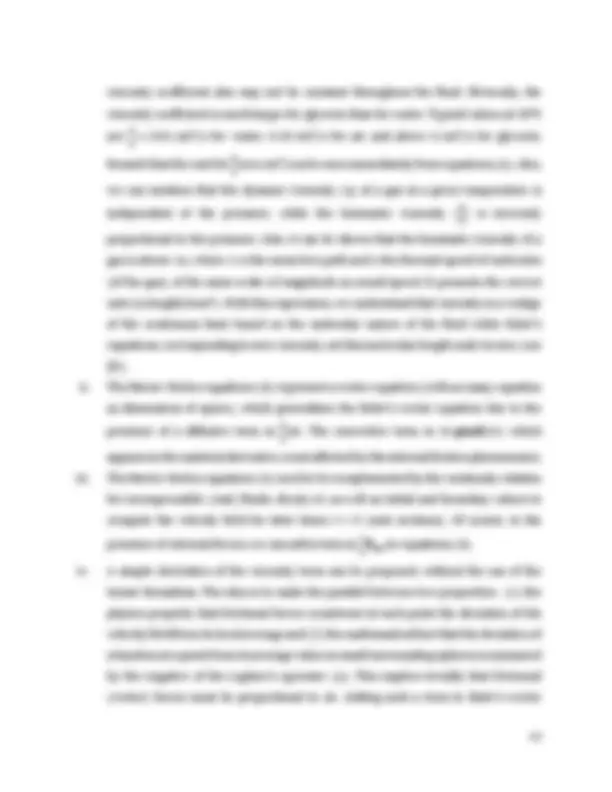
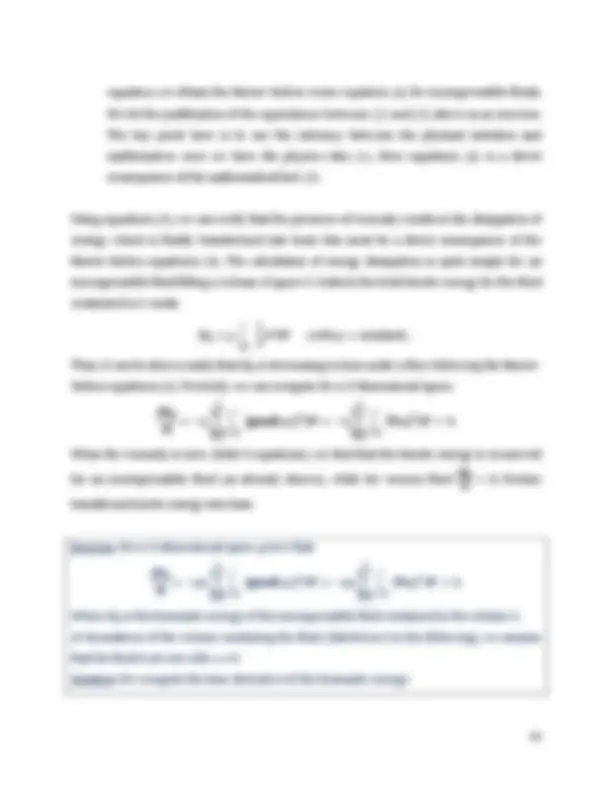
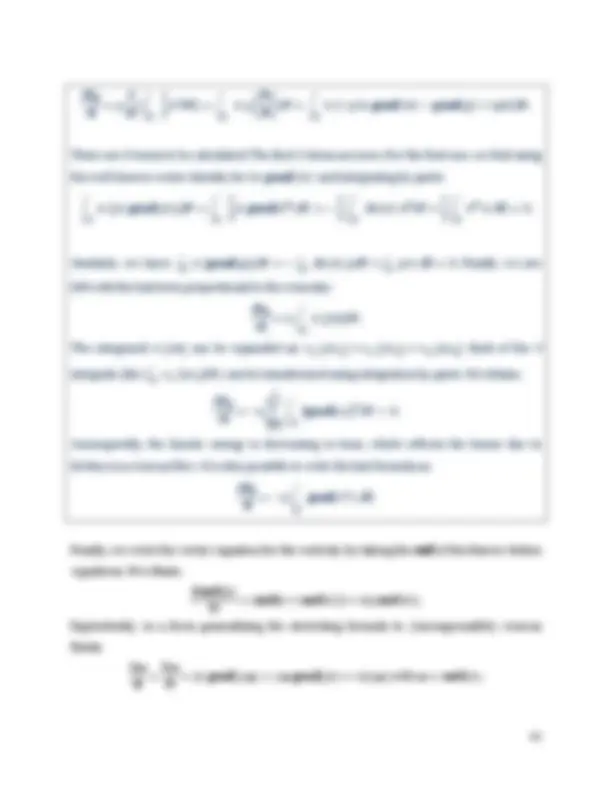
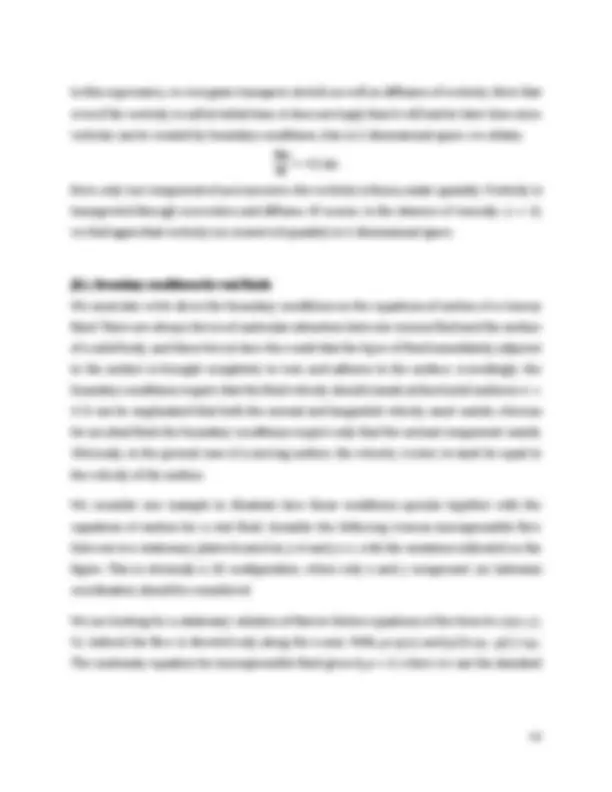
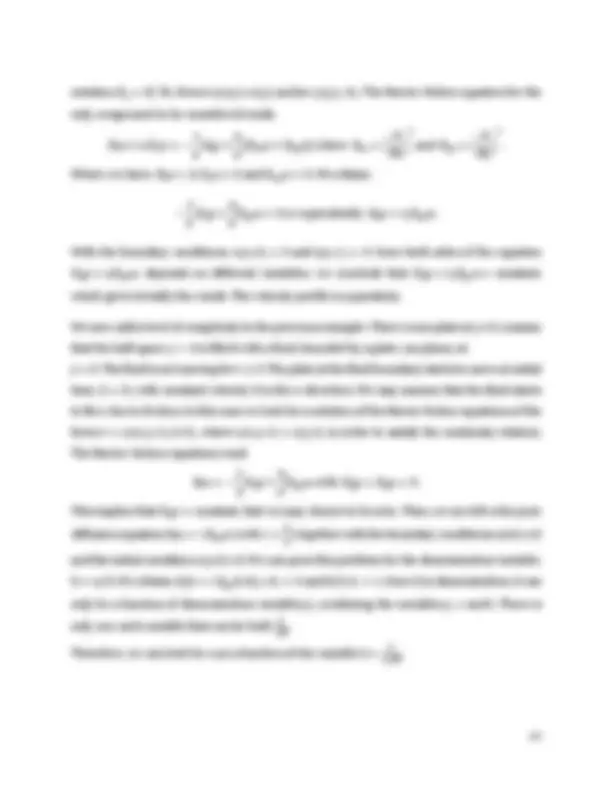
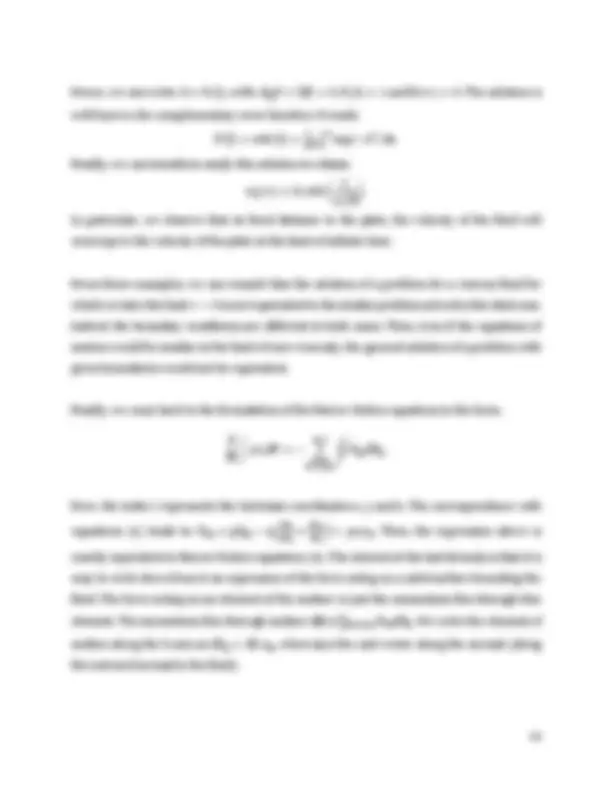
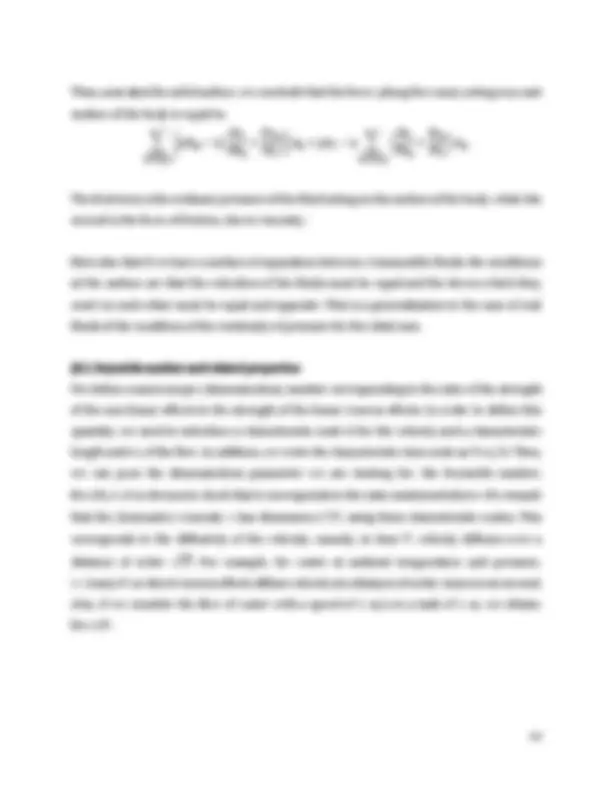
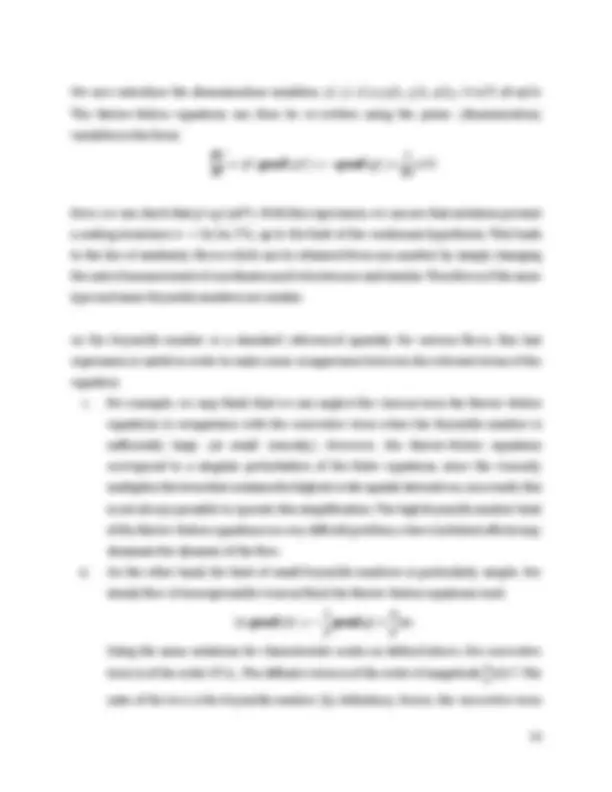
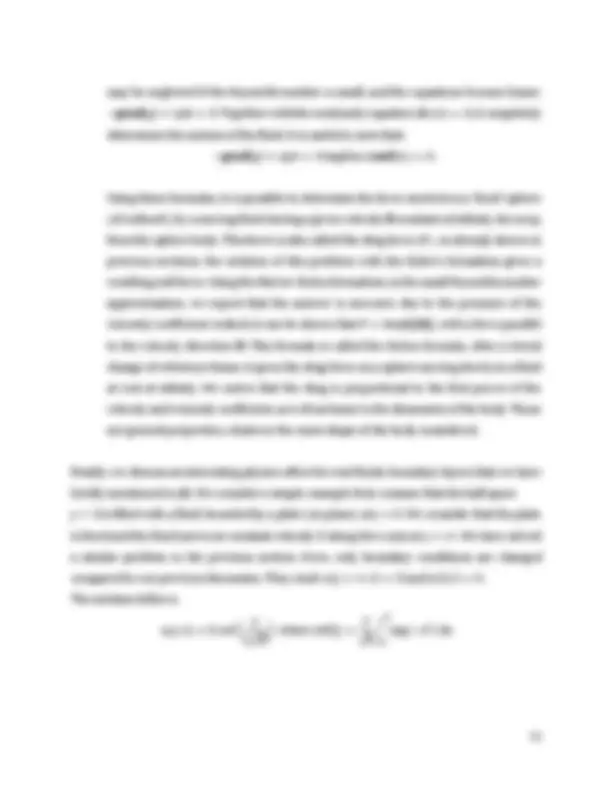
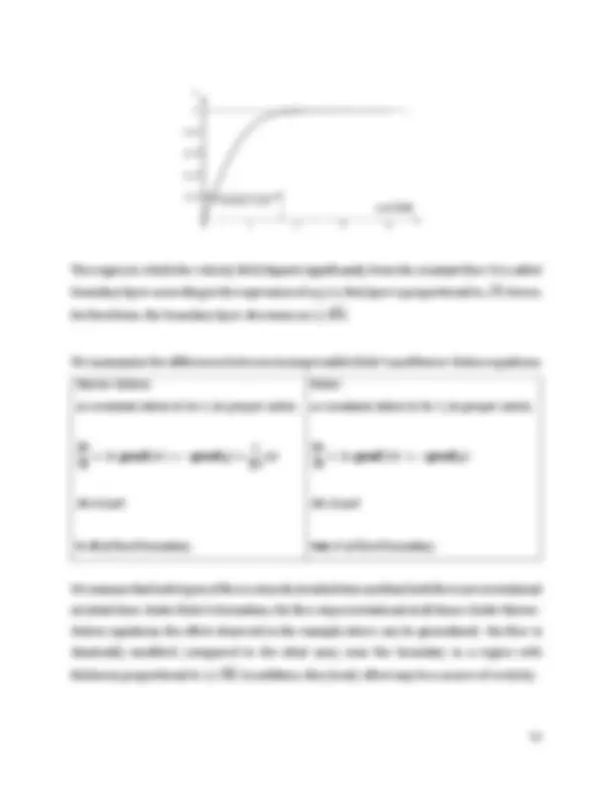
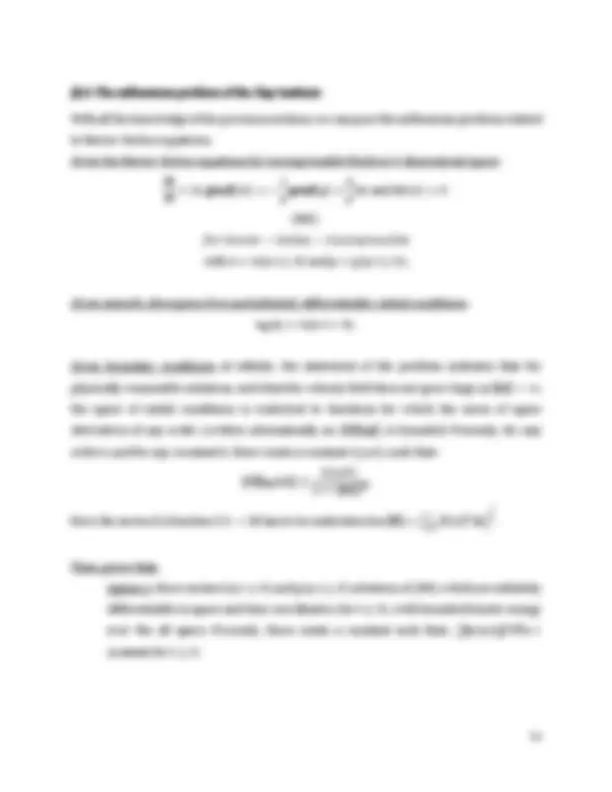
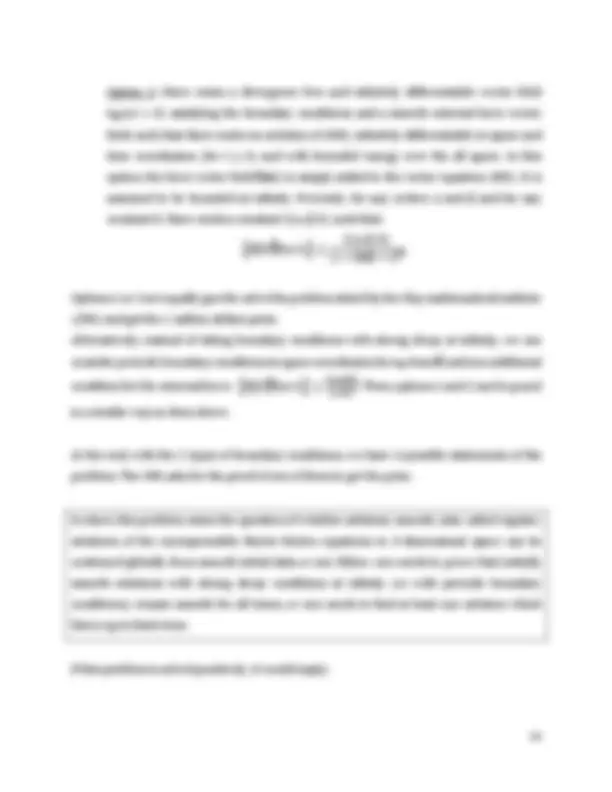
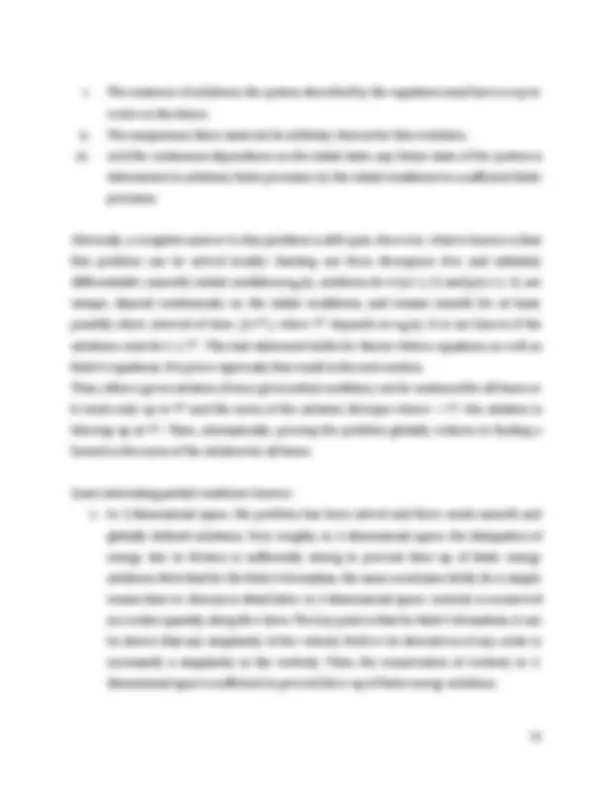
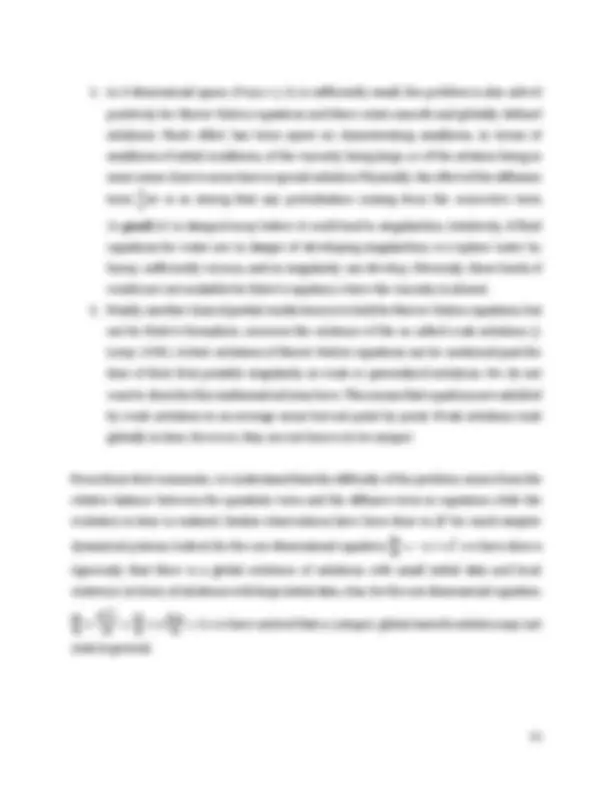
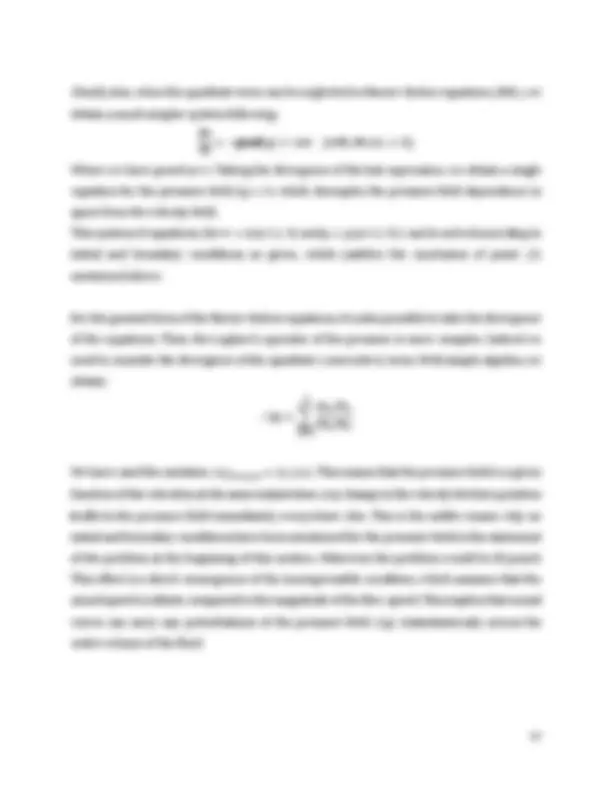
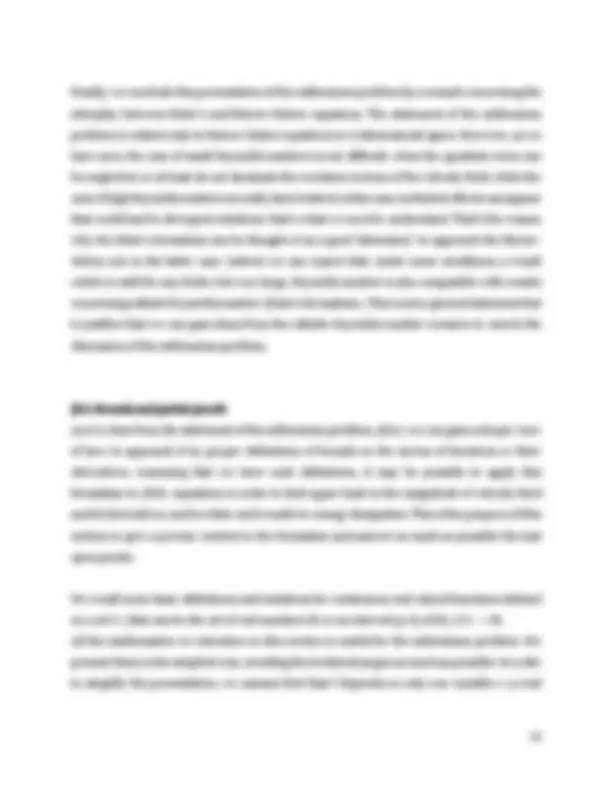
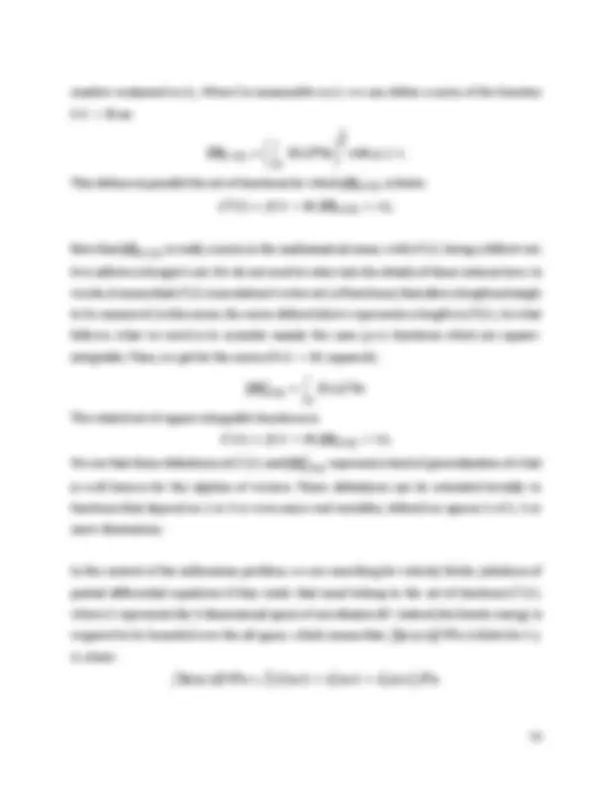
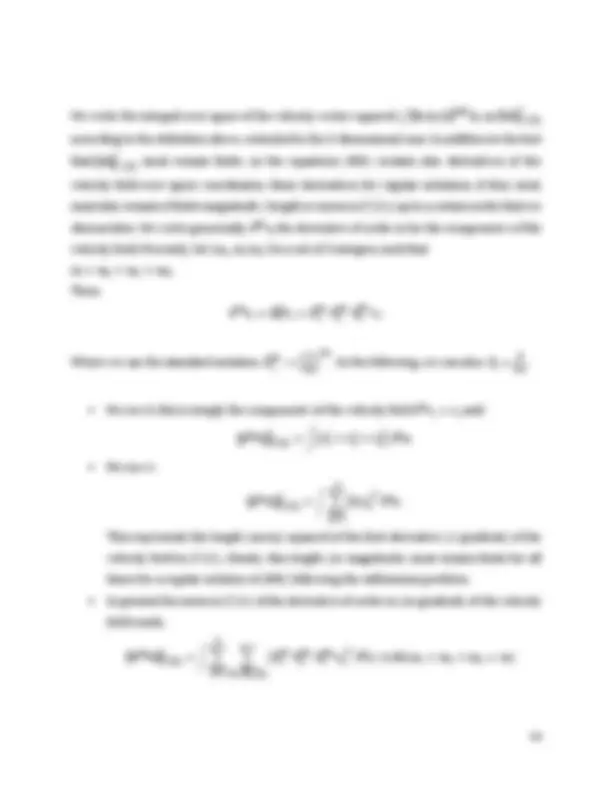
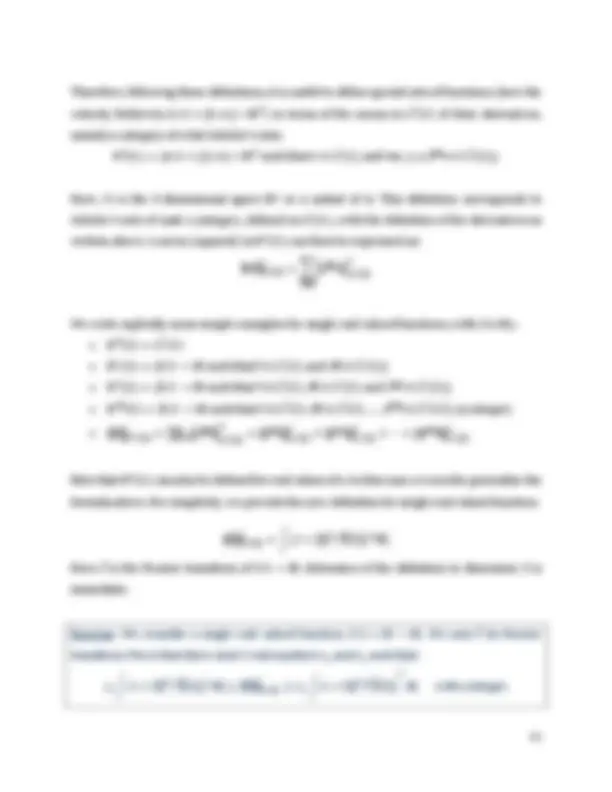
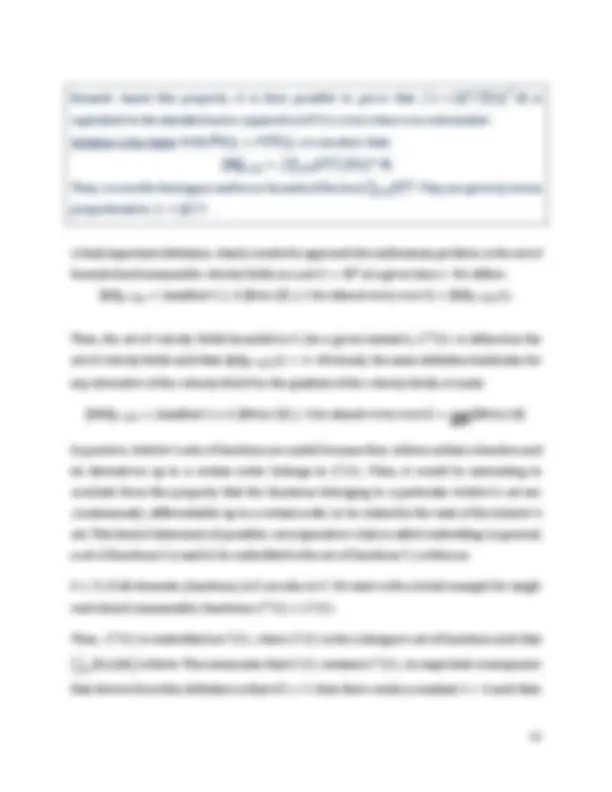
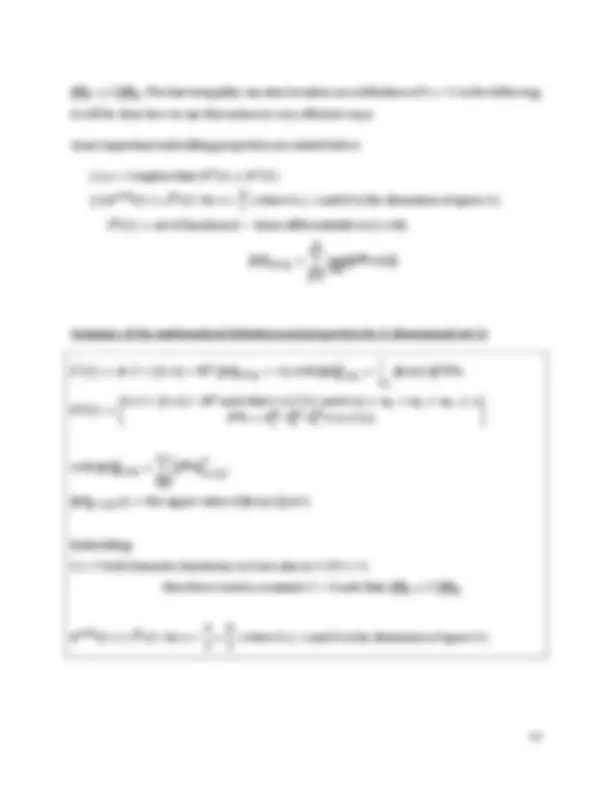
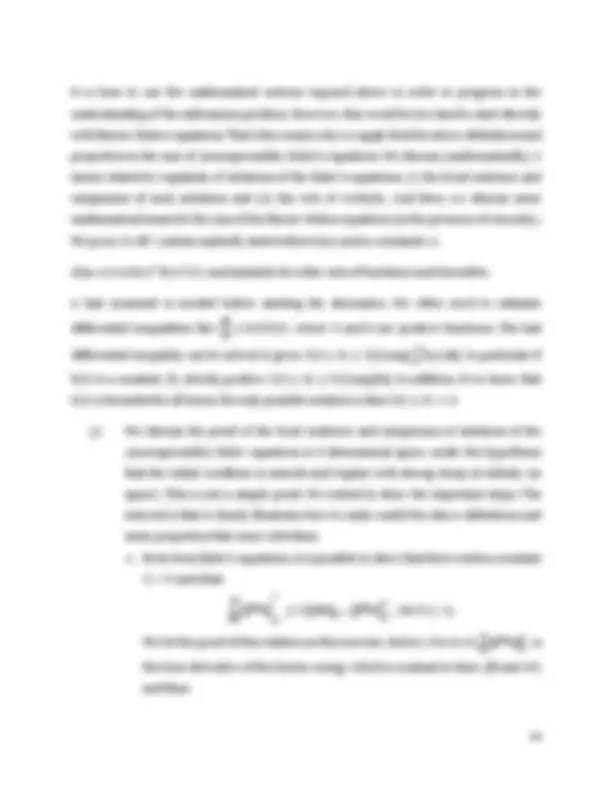
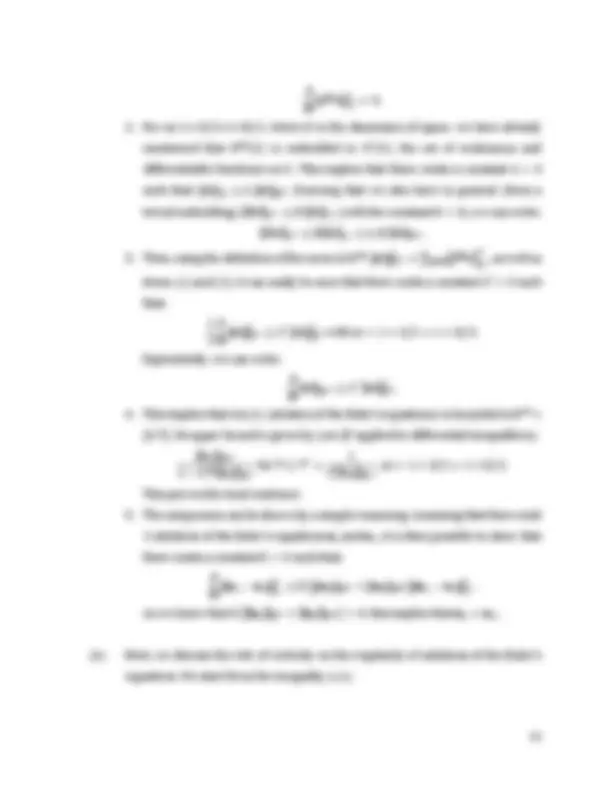
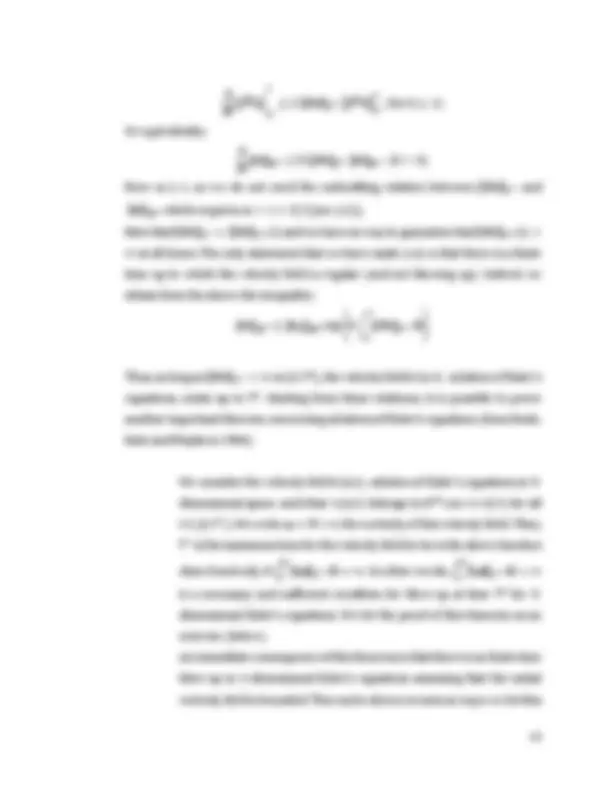
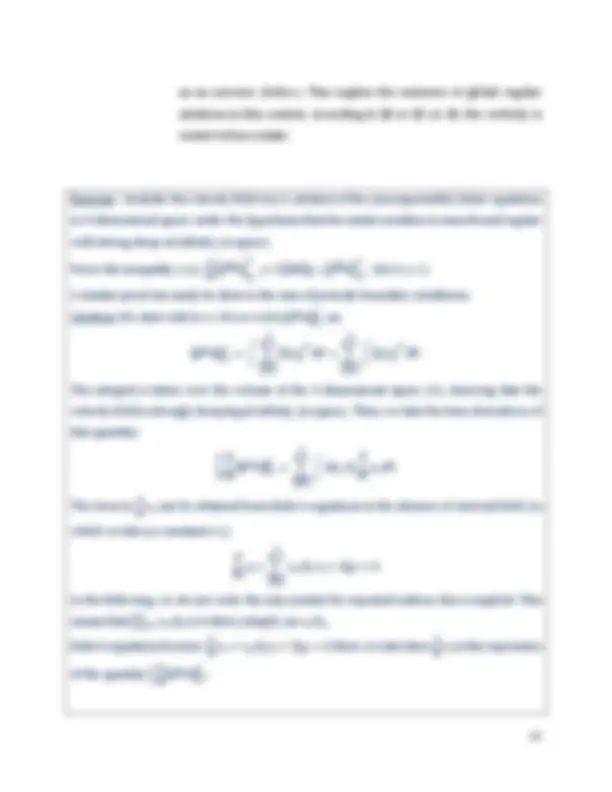
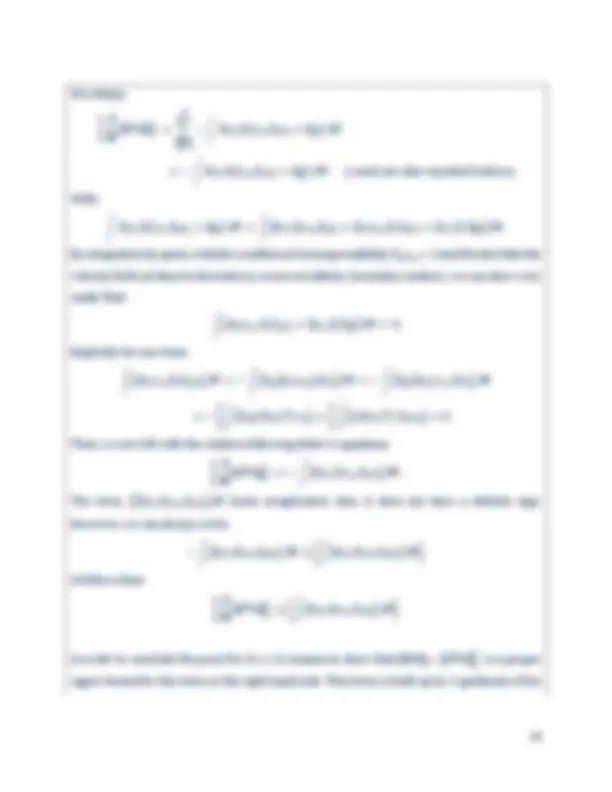
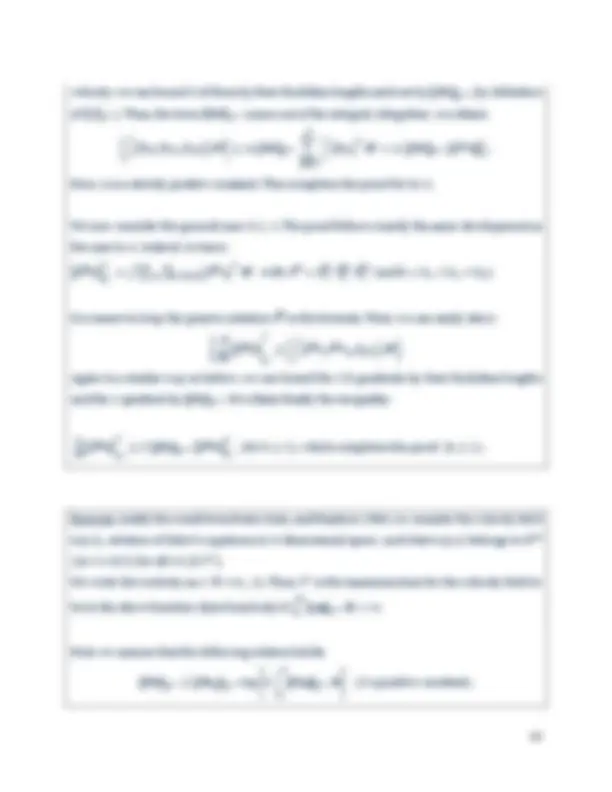
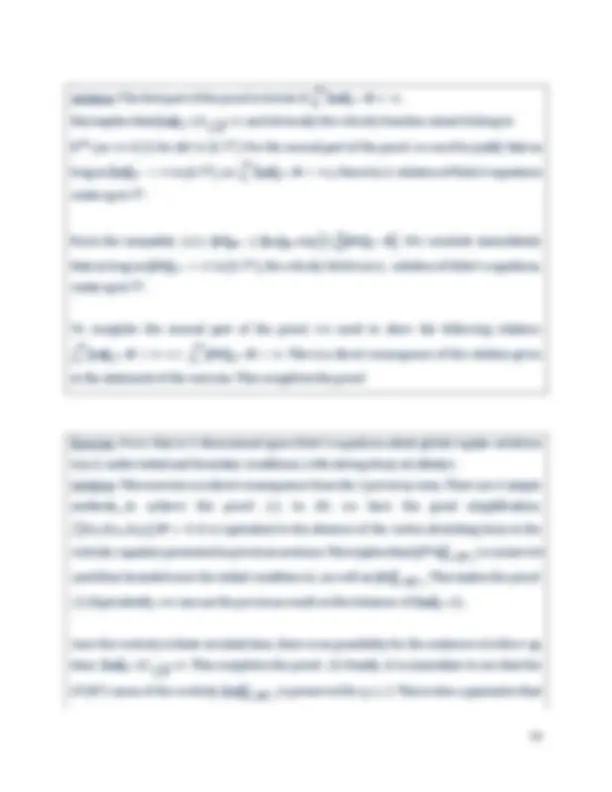
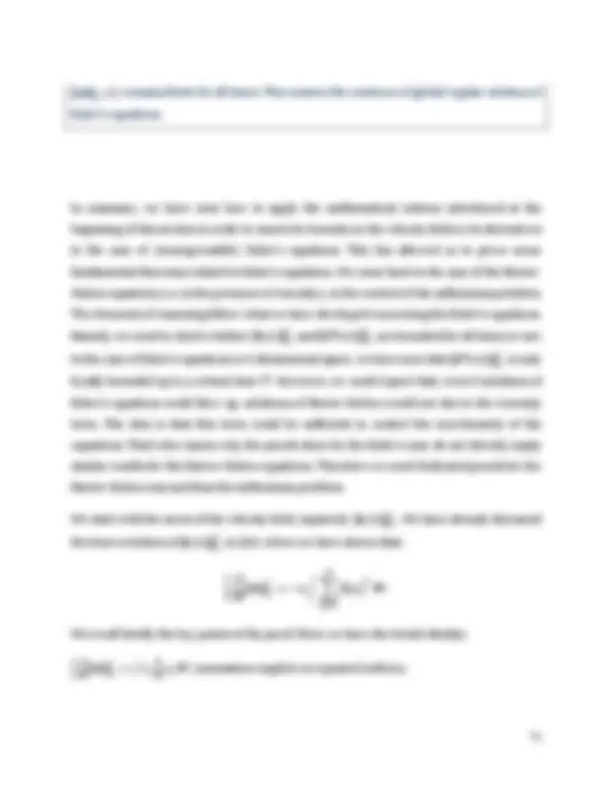
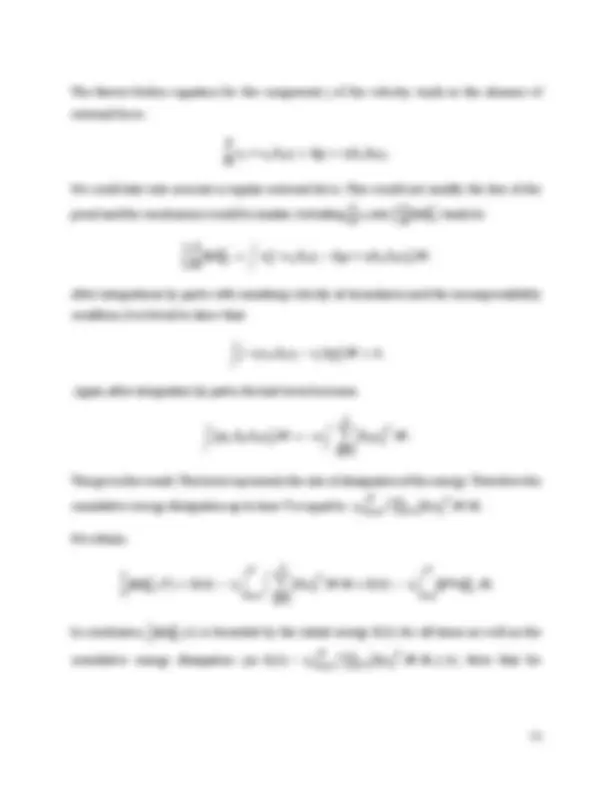
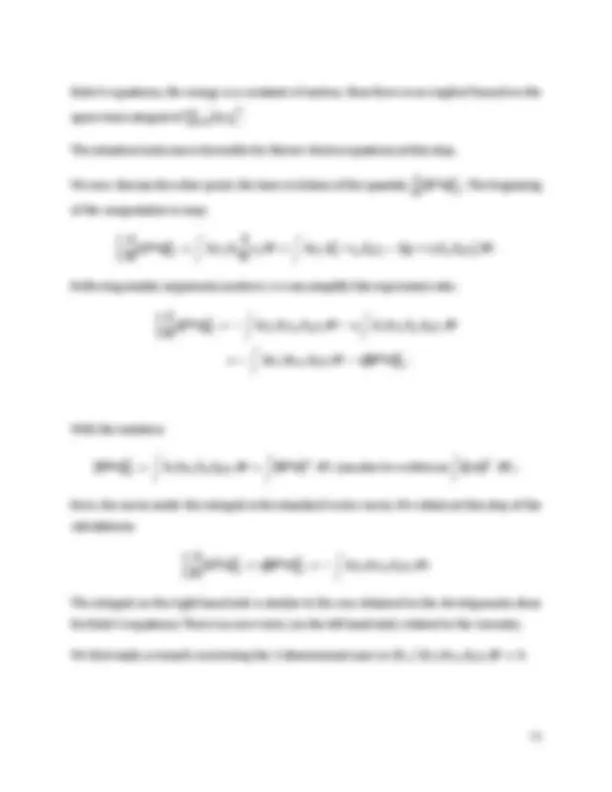
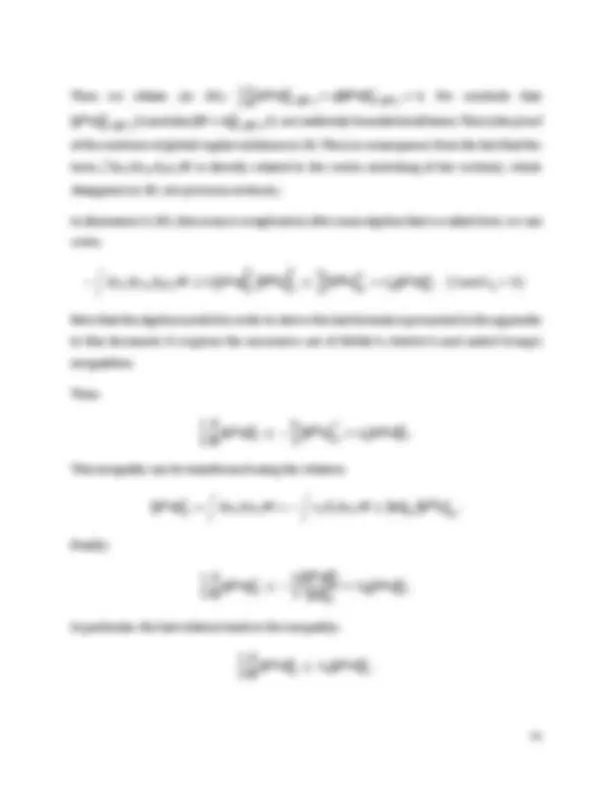
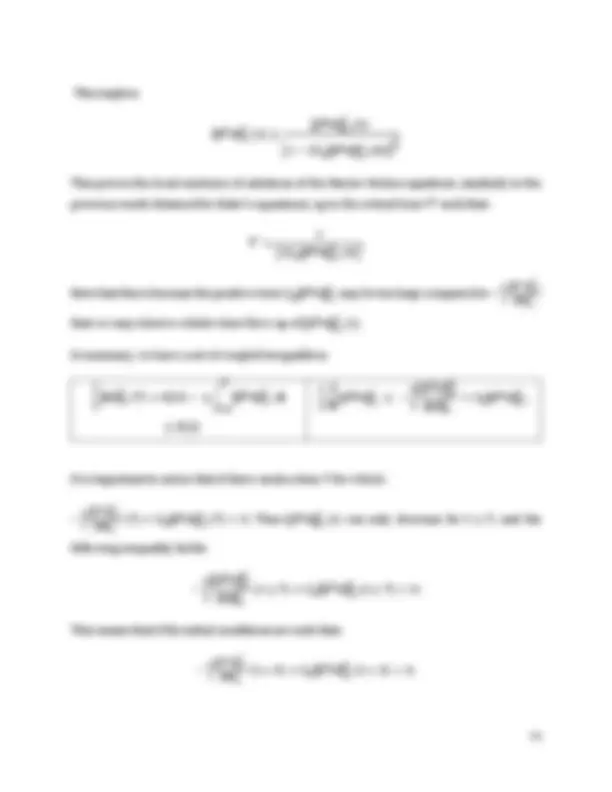
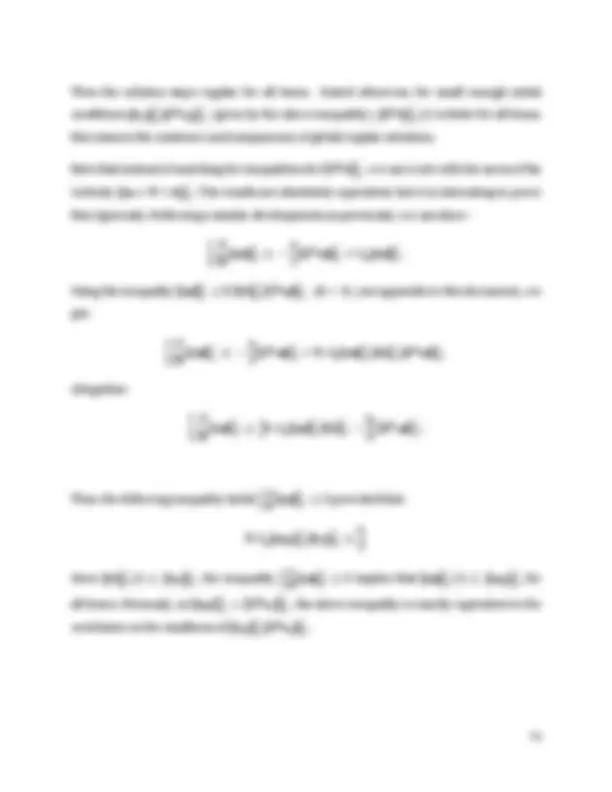
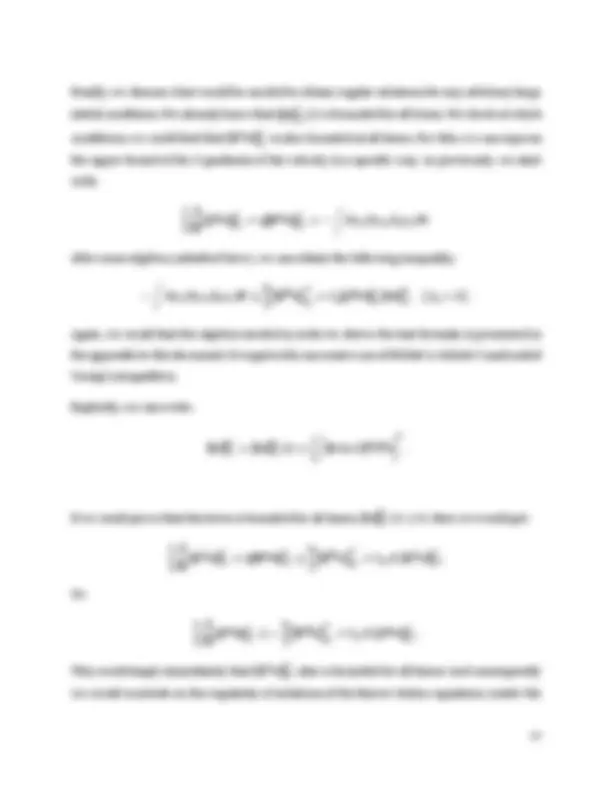
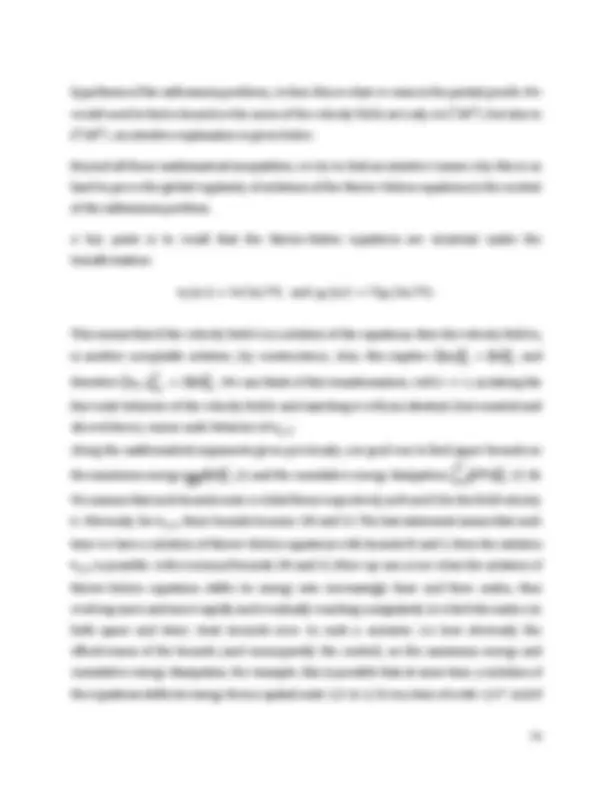
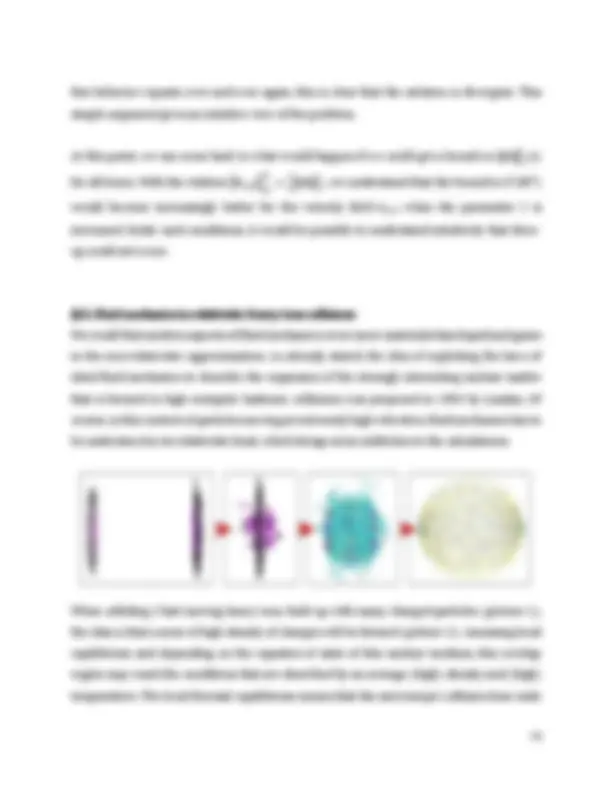
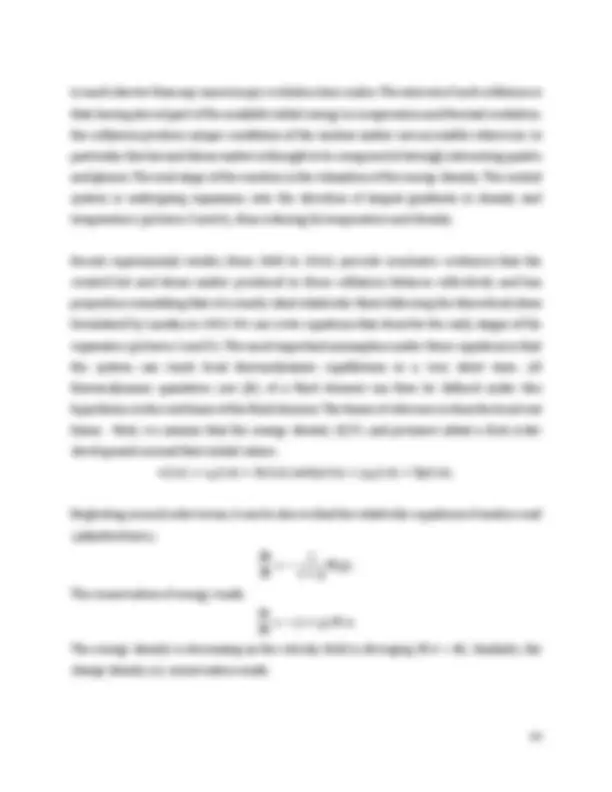
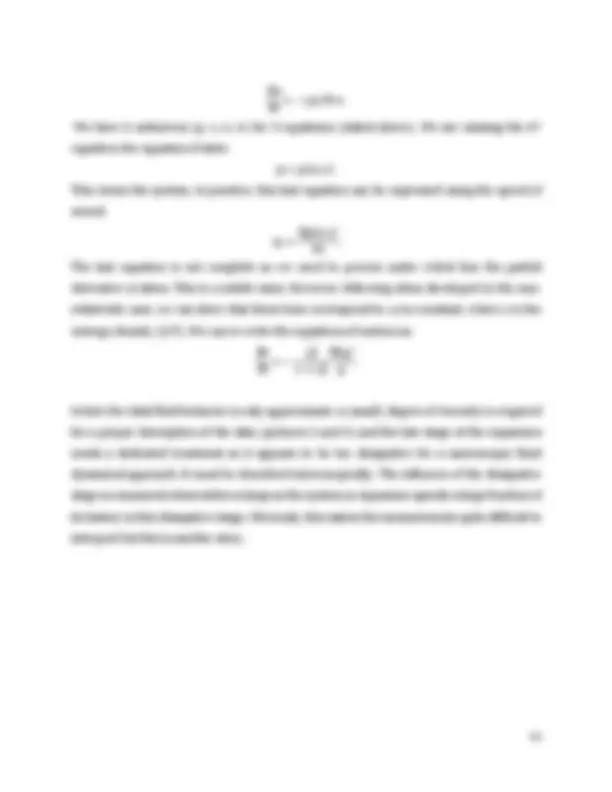


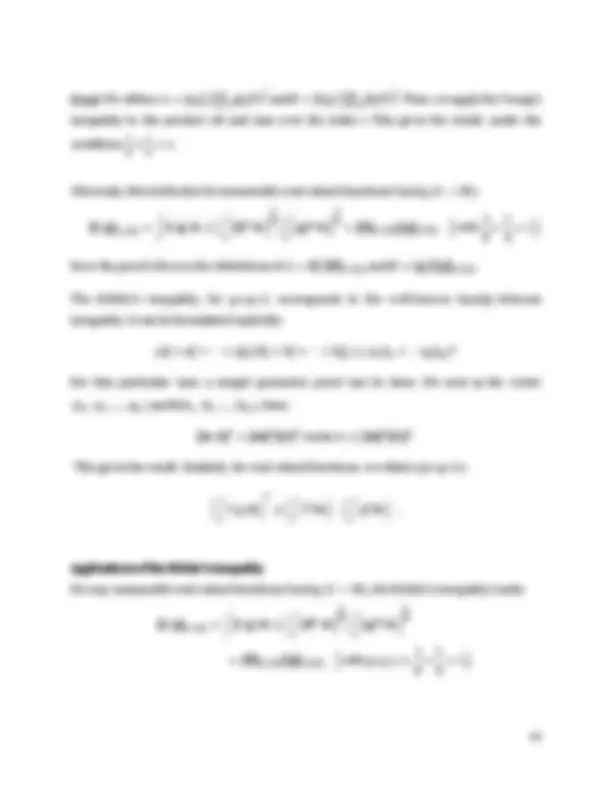
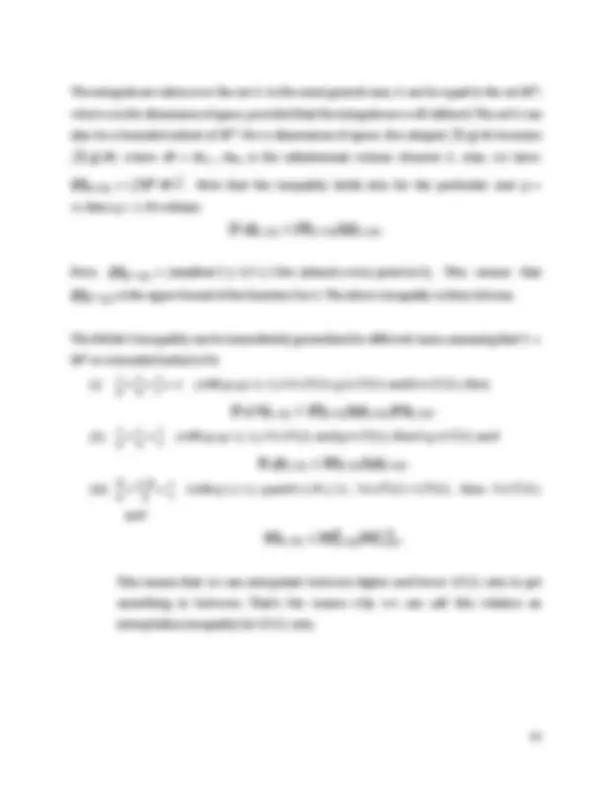
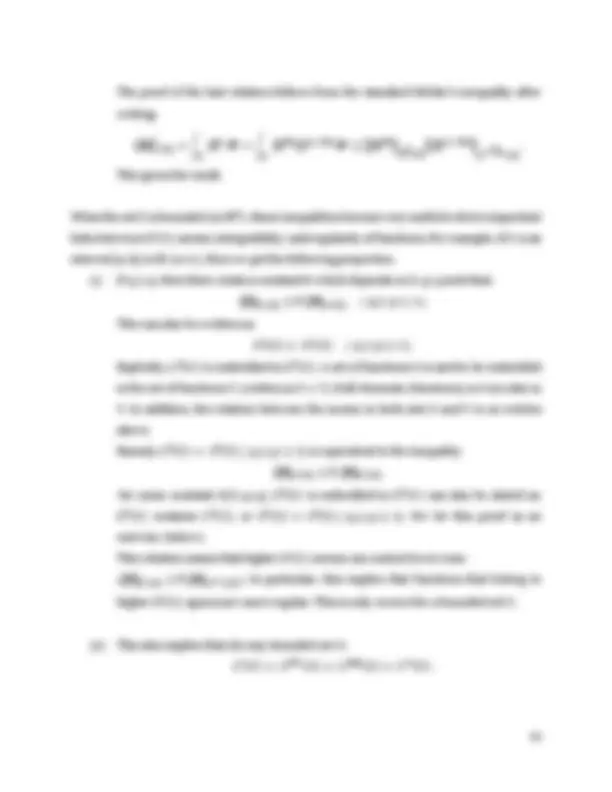
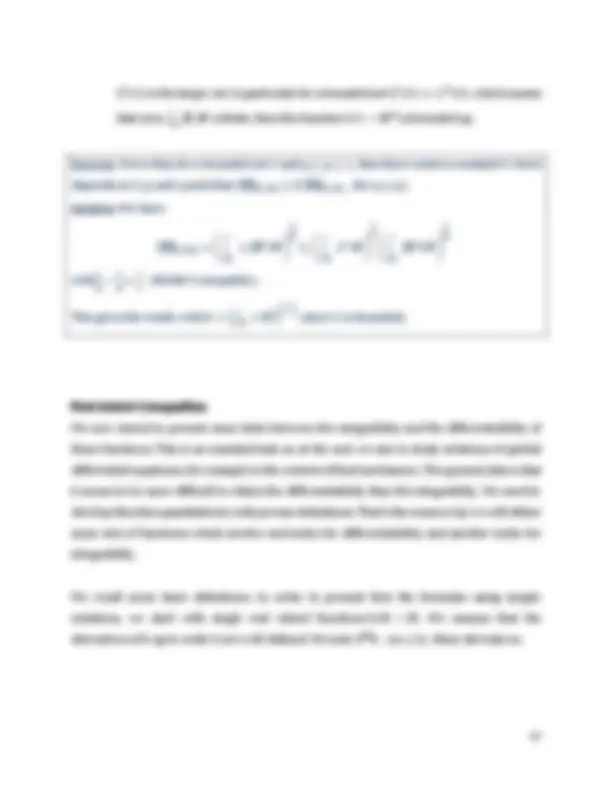
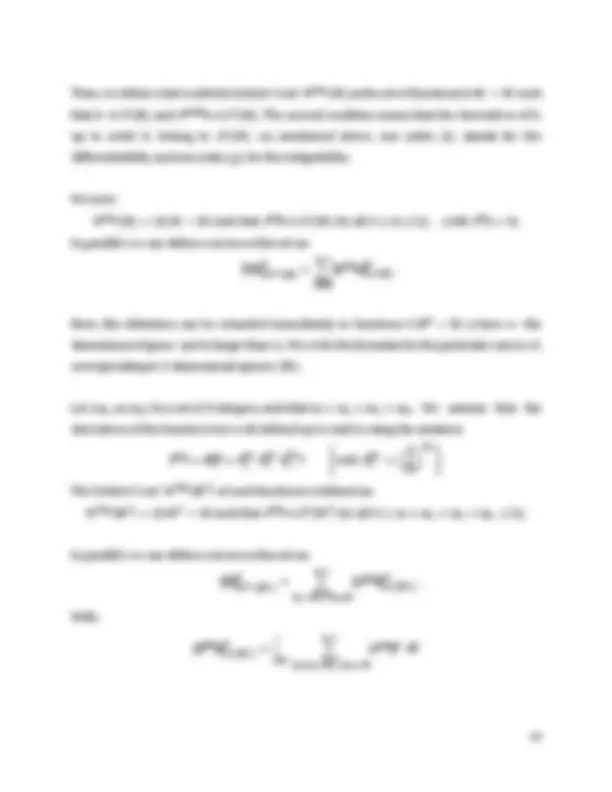
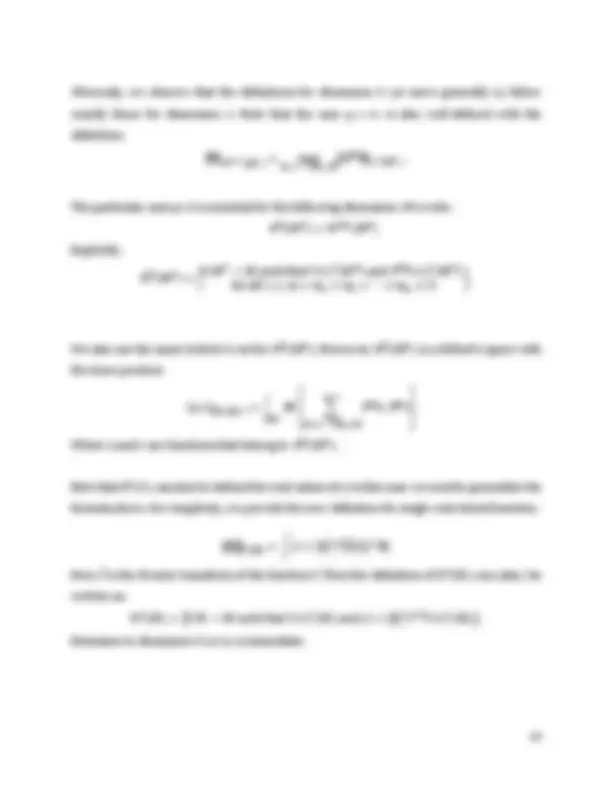
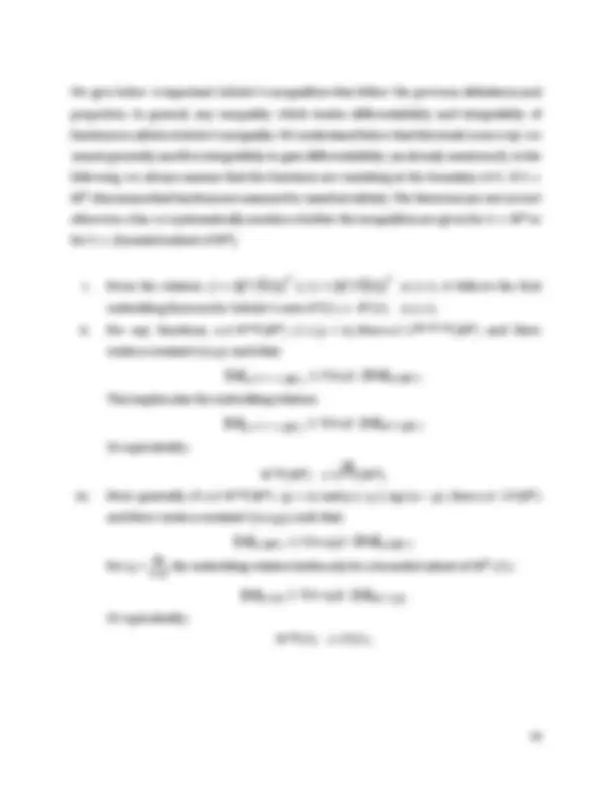
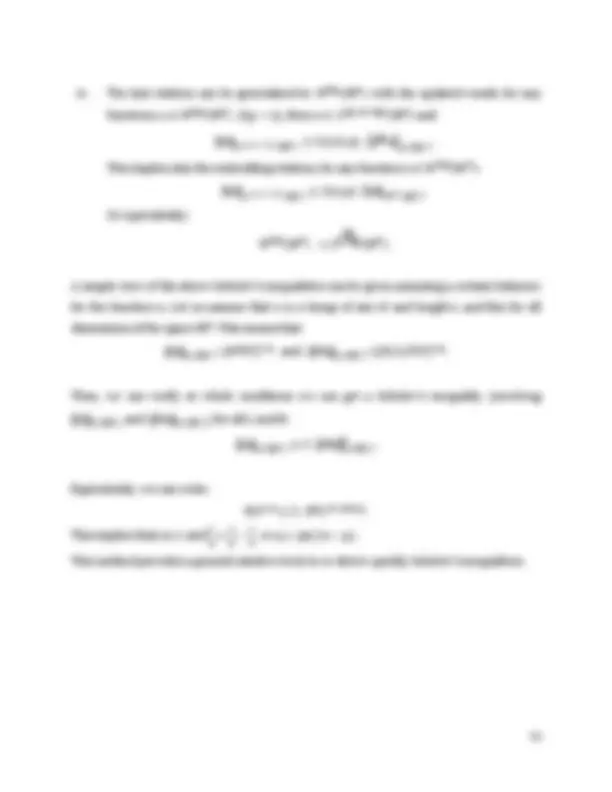
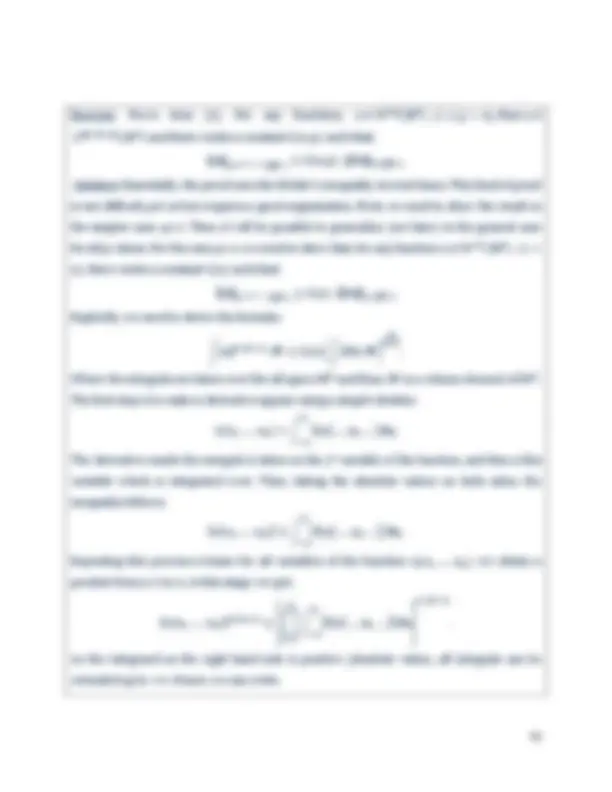
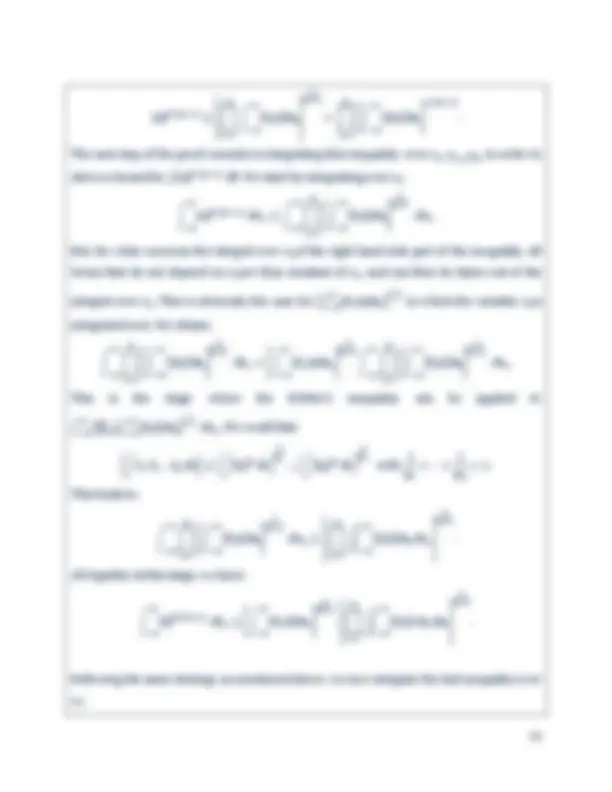
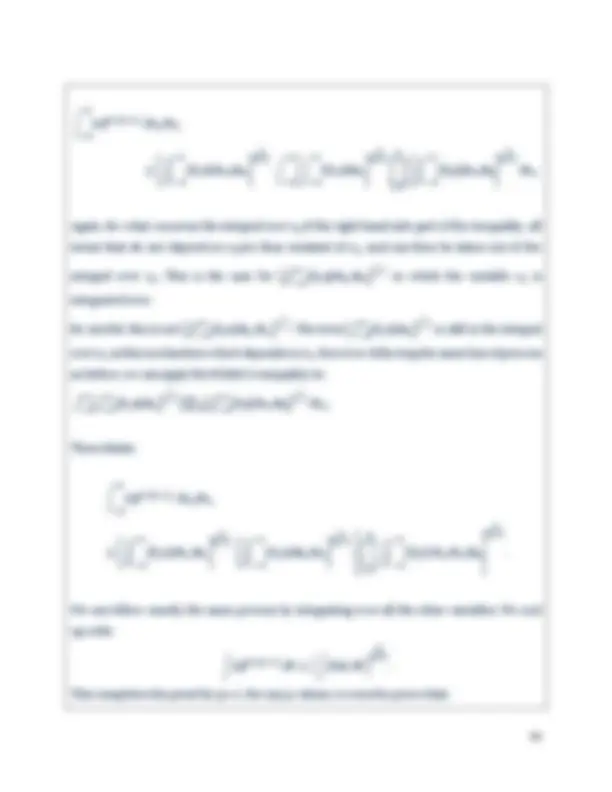

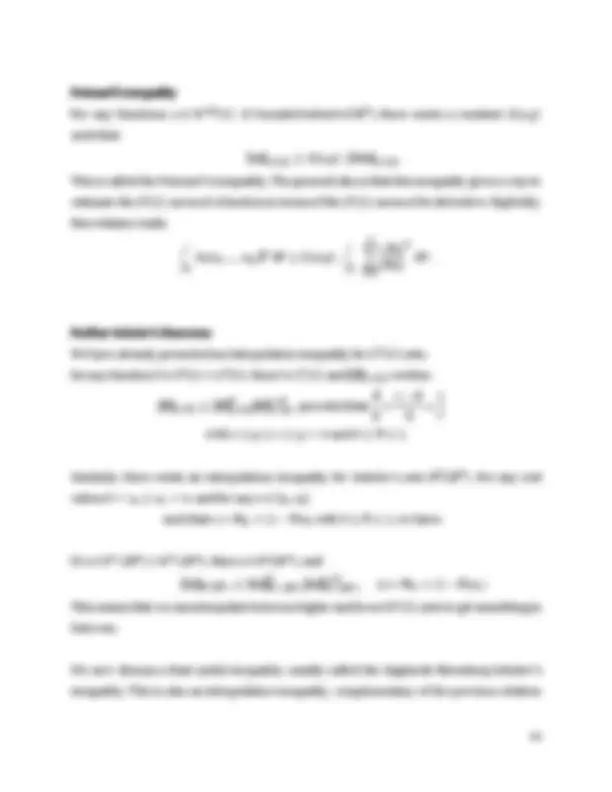
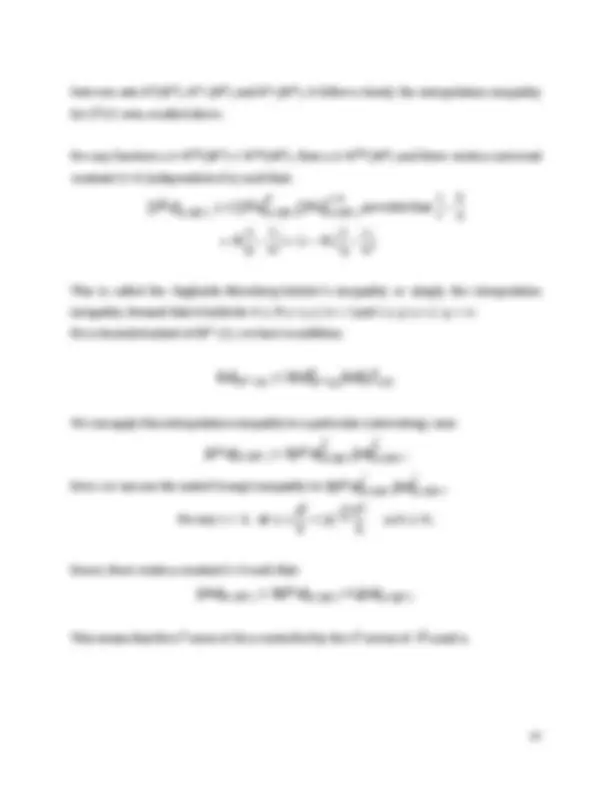


Study with the several resources on Docsity

Earn points by helping other students or get them with a premium plan


Prepare for your exams
Study with the several resources on Docsity

Earn points to download
Earn points by helping other students or get them with a premium plan
Community
Ask the community for help and clear up your study doubts
Discover the best universities in your country according to Docsity users
Free resources
Download our free guides on studying techniques, anxiety management strategies, and thesis advice from Docsity tutors
The derivation of euler's equations, a fundamental set of equations in fluid mechanics. The conservation principles of mass and energy, and the relationship between fluid velocity, pressure, and mass density. The document also mentions the navier-stokes equations and the concept of vorticity.
What you will learn
Typology: Study Guides, Projects, Research
1 / 97

This page cannot be seen from the preview
Don't miss anything!


























































































Laurent Schoeffel, CEA Saclay
These lecture notes have been prepared as a first course in fluid mechanics up to the presentation of the millennium problem listed by the Clay Mathematical Institute. Only a good knowledge of classical Newtonian mechanics is assumed. We start the course with an elementary derivation of the equations of ideal fluid mechanics and end up with a discussion of the millennium problem related to real fluids. With this document, our primary goal is to debunk this beautiful problem as much as possible, without assuming any previous knowledge neither in fluid mechanics of real fluids nor in the mathematical formalism of Sobolev’s inequalities. All these items are introduced progressively through the document with a linear increase in the difficulty. Some rigorous proofs of important partial results concerning the millennium problem are presented. At the end, a very modern aspect of fluid mechanics is covered concerning the subtle issue of its application to high energetic hadronic collisions.
§1. Introduction §2. Continuum hypothesis §3. Mathematical functions that define the fluid state §4. Limits of the continuum hypothesis §5. Closed set of equations for ideal fluids §6. Boundary conditions for ideal fluids § 7. Introduction to nonlinear differential equations §8. Euler’s equations for incompressible ideal fluids §9. Potential flows for ideal fluids §10. Real fluids and Navier-Stokes equations §11. Boundary conditions for real fluids §12. Reynolds number and related properties § 13. The millennium problem of the Clay Institute § 14. Bounds and partial proofs § 15. Fluid mechanics in relativistic Heavy-Ions collisions
(iii) This implies that particles will flow in a certain transverse direction, as indicated on the figure. This is known as the transverse flow property, well established experimentally.
We come back on these ideas and their developments in the last section of this document. It requires a relativistic formulation of fluid mechanics. Up to this section, we always assume that the dynamics is non-relativistic.
§2. Continuum hypothesis
Fluid mechanics is supposed to describe motion of fluids and related phenomena at macroscopic scales, which assumes that a fluid can be regarded as a continuous medium. This means that any small volume element in the fluid is always supposed so large that it still contains a very great number of molecules. Accordingly, when we consider infinitely small elements of volume, we mean very small compared with the volume of the body under consideration, but large compared with the distances between the molecules. The expressions fluid particle and point in a fluid are to be understood in this sense. That is, properties such as density, pressure, temperature, and velocity are taken to be well-defined at infinitely small points.
These properties are then assumed to vary continuously and smoothly from one point to another. Consequently, the fact that the fluid is made up of discrete molecules is ignored. If, for example, we deal with the displacement of some fluid particle, we do mean not the displacement of an individual molecule, but that of a volume element containing many molecules, though still regarded as a point in space. That’s why fluid mechanics is a branch of continuum mechanics, which models matter from a macroscopic viewpoint without using the information that it is made out of molecules (microscopic viewpoint).
§3. Mathematical functions that define the fluid state Following the continuous assumption, the mathematical description of the state of a moving fluid can be characterized by functions of the coordinates x, y, z and of the time t. These functions of (x, y, z, t) are related to the quantities defined for the fluid at a given point (x, y, z) in space and at a given time t, which refers to fixed points in space and not to fixed particles of the fluid. For example, we can consider the mean local velocity v(x, y, z, t) of fluid particles or fluid points, called the fluid velocity, and two thermodynamic quantities that characterize the fluid state, the pressure p(x, y, z, t) and the mass density (x, y, z, t), the mass per unit volume of fluid. Following the discussion of §2, two remarks can be done at this stage: i. The fluid is assumed to be a continuum. This implies that all space-time derivatives of all dependent variables exist in some reasonable sense. In other words, local properties such as density pressure and velocity are defined as averages over elements large compared with the microscopic structure of the fluid but small enough in comparison with the scale of the macroscopic. This allows the use of differential calculus to describe such a system. ii. All the thermodynamic quantities are determined by the values of any two of them, together with the equation of state. Therefore, if we are given five quantities, namely the three components of the velocity v, the pressure p and the mass density , the state of the moving fluid is completely determined. We recall that only if the fluid is close to thermodynamic equilibrium, its thermodynamic properties, such as pressure, density, temperature are well-defined. This requires (as a very former hypothesis) that local relaxation times towards thermal equilibrium are much shorter than any macroscopic dynamical time scale. In particular, microscopic collision time scale (between elementary constituents of the fluid) needs to be much shorter than any macroscopic evolution time scales. This hypothesis is almost a tautology for standard fluids build up by molecules at reasonable density, but becomes not trivial in the case of some hot dense matter state created in high energetic hadronic collisions.
flow map.
A fluid particle moving through the fluid volume is labeled by the (vector) variable X (defined at t=0). At some initial time, we define a subset of fluid particles (of the entire fluid volume) Ω 0. The fluid particles of this subset will move through the fluid within time. We introduce a function 𝚽(𝐗, t) that describes the change of the particle position from the initial time up to t > 0. The function 𝚽(. , t) is itself a vector, with 3 coordinates corresponding to the 3 coordinates of space (Φx, Φy, Φz). This means that we can denote the position of any particle
of fluid at time t by 𝚽(𝐗, t) which starts at the position X at t=0. Then, we can label the new subset of fluid particles at time t, originally localized in Ω 0 , as:
Ωt = {𝚽(𝐗, t) ∶ 𝐗 belongs to Ω 0 }.
Stated otherwise, the function t → 𝚽(𝐗, t), represents the trajectory of particles: this is what we also call the flow map. In particular, the particle velocity is given by:
𝐯(x, y, z, t) = 𝜕𝚽𝜕t (𝐗, t) with 𝚽(𝐗, t = 0) = 𝐗.
We can think of Ωt as the volume moving with the fluid.
§4. Limits of the continuum hypothesis According to the continuous assumption (§2), the physical quantities (like velocity, pressure and density) are supposed to vary smoothly on macroscopic scales. However, this may not be the case everywhere in the flow. For example, if a shock front of the density appears at some values of the coordinates at a given time, the flow would vary very rapidly at that point, over a length of order the collision mean free path of the molecules. In this case, the continuum approximation would be only piecewise valid and we would need to perform a matching at the shock front. Also, if we are interesting by scale invariant properties of fluid in some particular cases, we need to keep in mind that there is a scale at which the equations of fluid mechanics break up, which is the molecular scale characterized by the mean free path of molecules between collisions. For example, for flows where spatial scales are not larger than the mean distance between the fluid molecules, as for example the case of highly rarefied gazes, the continuum assumption does not apply.
§5. Closed set of equations for ideal fluids The derivation of equations underlying the dynamics of ideal fluids is based on three conservation principles: i. Conservation of matter. Matter is neither created nor destroyed provided there is no source or sink of matter; ii. Newton’s second law or balance of momentum. For a fluid particle, the rate of change of momentum equals the force applied to it; iii. Conservation of energy.
In turn, these principles generate the five equations we need to describe the motion of an ideal fluid: (i) Continuity equation, which governs how the density of the fluid evolves locally and thus indicates compressibility properties of the fluid; (ii) Euler’s equations of motion for a fluid element which indicates how this fluid element moves from regions of high pressure to those of low pressure; (iii) Equation of state which indicates the mechanism of energy exchange inside the fluid.
By expanding div(ρ𝐯) as (𝐯. 𝐠𝐫𝐚𝐝)(ρ) + ρdiv(𝐯), we can also write this equation as:
𝜕ρ 𝜕t + (𝐯. 𝐠𝐫𝐚𝐝)(ρ) = [
𝜕t + (𝐯. 𝐠𝐫𝐚𝐝)] (ρ) = −ρdiv(𝐯). (1′)
We identify the operator [ (^) 𝜕t𝜕 + (𝐯. 𝐠𝐫𝐚𝐝)] that we define below as the material derivative, or
the derivative following the flow.
Before developing some consequences of the continuity equation, we establish the Newton’s second law (ii) for some volume of the fluid, assumed to be ideal, characterized by its mass density, pressure and fluid particle velocity. In the absence of external force, by definition of the pressure, the total force acting on the ideal fluid in volume is equal to: − ∮ pd𝚺.
This last formula represents the integral of the pressure taken over the surface bounding the volume, with similar conventions as previously defined for the surface element d𝚺. This surface integral can be transformed to a volume integral over : − ∮ pd𝚺 = − ∫ 𝐠𝐫𝐚𝐝(p)dV.
Thus, the fluid surrounding any elementary volume dV exerts a force −dV 𝐠𝐫𝐚𝐝(p) on that element. Moreover, from Newton’s second law applied to this elementary volume dV, the
mass times the acceleration equals: ρdV d𝐯dt.
Then, the Newton’s second law of motion for the fluid per unit volume reads:
ρ d𝐯dt = −𝐠𝐫𝐚𝐝(p).
(2)
Here, we need to be careful with the mathematical expression d𝐯/dt. It does not represent (only) the rate of change of the fluid velocity at a fixed point in space, which would be mathematically written as 𝜕𝐯/ ∂t.
Rather, d𝐯/dt is the rate of change of the velocity of a fluid particle as it moves in space (see §2), called the material derivative, namely:
d𝐯 dt =
[𝐯(x + dx, y + dy, z + dz, t + dt) − 𝐯(x, y, z, t)] dt.
This can be developed as:
d𝐯 dt =
dx dt
𝜕x +
dy dt
𝜕y +
dz dt
𝜕z +
𝜕t = (𝐯. 𝐠𝐫𝐚𝐝)(𝐯) +
∂t.
There are two terms in the expression of d𝐯 = d𝐯dt. dt: the difference between the velocities of
the fluid particle at the same instant in time at two points distant of (dx, dy, dz), which is the distance moved by the fluid particle during dt, and the change during dt in the velocity at a fixed point in space (x, y, z). Combining the vector equation (2) and the expression of the material derivative, we get:
∂𝐯 ∂t + (𝐯. 𝐠𝐫𝐚𝐝)(𝐯) = −
ρ 𝐠𝐫𝐚𝐝(p). (3)
This vector equation (3) represents a set of three equations (in three dimensions of space) that describe the motion of an ideal fluid, first obtained by Euler in 1755. That’s why it is called the Euler’s equations, the second fundamental set of equations of fluid mechanics (ii). It is trivial to expand the vector equation (3) on the 3 Cartesian coordinates of space (x, y, z) as a set of 3 equations (in a compact form):
( ∂t ∂+ vx∂x^ ∂ + vy∂y^ ∂+vz∂z^ ∂) [
vx vy vz
] = −^1 ρ [
∂p/ ∂x ∂p/ ∂y ∂p/ ∂z
If external forces have to be considered these equations become:
∂𝐯 ∂t + (𝐯. 𝐠𝐫𝐚𝐝)(𝐯) = −
ρ 𝐠𝐫𝐚𝐝(p) +
ρ 𝐅ext.
The conservation of mass can then be written as:
∫ ρ(𝐱, t)dV = Ωt
∫ ρ(𝐗, 0)dV Ω 0
Since the right-hand side is independent of the time, we can write:
d dt ∫ Ω^ tρ(𝐱, t)dV =
d dt ∫ Ω^ tρ(𝚽(𝐗, t), t)dV =^ 0.
In this expression, the time derivative represents the material derivative, following the
integration depends on the time in the above formula. It can be shown that the following relation holds:
d dt ∫ Ω^ tρ(𝚽(𝐗, t), t)dV =^ ∫^ [
𝜕ρ Ωt 𝜕t + div(ρ𝐯)]dV^. Then, this leads to the continuity equation.
We come back to the Euler’s equations (3). An important vector identity is the following: 1 2 𝐠𝐫𝐚𝐝(𝐯
Then, equations (3) can be rewritten as: ∂𝐯 ∂t +
ρ 𝐠𝐫𝐚𝐝(p)
This expression of equations (3) has many interests that we shall see later. For example, in the case of constant mass density, taking the curl of this equation makes the gradients vanishing and we obtain a differential equation involving only the velocity field. Another interesting physical case appears when 𝐜𝐮𝐫𝐥(𝐯) = 0.
Then the velocity field can be written as the gradient of a scalar function and the above expression leads to an interesting simple equation.
In this section we have ignored all processes related to energy dissipation, which may occur in a moving fluid as a consequence of internal friction (or viscosity) in the fluid as well as heat exchange between different parts of the fluid. Thus we have treated only the case of ideal fluids, for which thermal conductivity and viscosity can be neglected. With the continuity equation, the Euler’s equations make a set of 4 equations, for five quantities that characterize the ideal fluid (§2).
This means that we are missing one equation, which is coming with the last conservation principle, namely the conservation of energy (iii). The absence of heat exchange between the different parts of the fluid implies that the motion is adiabatic: thus the motion of an ideal fluid is by definition considered as adiabatic. In other words, the entropy of any fluid particle remains constant as that particle moves in space inside the fluid. We label the entropy per unit mass as s. We can easily write the condition for an adiabatic motion as:
ds/dt = 0.
This represents the rate of change of the entropy (per unit mass) of a fluid particle as it moves in the fluid. This can be reformulated as:
𝜕s 𝜕t + (𝐯. 𝐠𝐫𝐚𝐝)(s) = 0. (4)
This expression is the general condition for adiabatic motion of an ideal fluid. This condition usually takes a much simpler form. Indeed, as it usually happens, the entropy is constant throughout some volume element of the fluid at some initial time, then it retains the same constant value everywhere in the fluid volume, at all times for any subsequent motion of the fluid. In this case, equation (4) becomes simply: s=constant.
It follows that the quantity 𝐯𝟐/2 + P/ρ is constant along a streamline, which coincides with the particle trajectory for steady flow. In general this constant is different with different streamlines: this is what is called the Bernoulli’s equation.
Ideal fluids present an interesting property: mass and momentum conservation principles are uncoupled from energy conservation. Indeed, if we consider the entropy to be constant throughout the fluid, it is not required to consider explicitly the energy conservation to describe the motion of the fluid. We can show that the relation corresponding to energy conservation is a consequence of the continuity and Euler’s equations under the condition of isentropic flow. We consider some volume element of the fluid, fixed in space, and we find how the energy of the fluid contained in this element varies with time. In the absence of external force, the energy density, per unit volume of the fluid, can be written as:
U =^12 ρ𝐯^2 + ρϵ.
The first term is the kinetic energy density and the second the internal energy density, noting 𝜖 the internal energy per unit mass.
The change in time of the energy contained in the volume element is then given by the
partial derivative with respect to time ∂ ∫ UdV∂t , where the integration is taken over . Then,
following a similar reasoning as for the continuity equation, we can write a general expression of energy conservation for the fluid in that volume element, namely:
∂ ∫ UdV ∂t = − ∮ 𝐅. d𝚺 = − ∫ div(𝐅)dV,
where 𝐅 represents the energy flux density. We let as an exercise (below) to show that 𝐅 is not equal to U𝐯, but:
𝐅 = ρ𝐯 (^12 𝐯^2 + ϵ + Pρ) = ρ𝐯 (^12 𝐯^2 + h).
With the notation h = 𝜖 + P/ρ, which corresponds to the enthalpy of the fluid per unit mass. The proof uses only the continuity and Euler’s equations. Since the equation of energy conservation must hold for any volume element, the integrand must vanish in:
∫[∂U∂t + div(𝐅)]dV = 0.
We end up with the local expression of energy conservation:
∂ρ(^12 𝐯^2 +𝜖) ∂t + div (ρ𝐯(
1 2 𝐯^2 + h)) = 0.
The zero on the right hand side of this relation comes from the condition for adiabatic motion: ds/dt = 0, which is a necessary condition for an ideal fluid (see above).
Stated differently, if ds/dt would be non-vanishing, this right hand side term would be necessarily proportional to: ds/dt. In fact, in the presence of heat flow within the fluid, which
means that the fluid is not supposed to be ideal, the rate of heat density change reads: ρT dsdt,
which leads to the general equation for non-vanishing ds/dt:
∂ρ(^12 𝐯^2 +𝜖) ∂t + div (ρ𝐯(
1 2 𝐯^2 + h)) = ρT^
ds dt.
Exercise: For an ideal fluid. Prove that the energy flux density can be written as:
ρ𝐯(^12 𝐯^2 + h) with h = 𝜖 + P/ρ. Then, derive the local expression of the conservation of
energy (per unit mass): ∂ρ(^12 𝐯^2 +ϵ) ∂t + div (ρ𝐯(
1 2 𝐯^2 + h)) = 0.
Solution: The idea is to compute the partial derivative ∂ρ(
(^12) 𝐯 (^2) +ϵ) ∂t using equations of fluid mechanics that we have established together with a thermodynamic relation involving the internal energy (per unit mass).
per unit time through a unit area perpendicular to the direction of velocity. This means that
any unit mass of fluid carries with it during its motion the amount of energy 12 𝐯^2 + h
(and not 12 𝐯^2 + ϵ).
The fact that enthalpy appears and not internal energy simply comes from the relation:
− ∮ ρ𝐯 (^12 𝐯^2 + h) d𝚺 = − ∮ ρ𝐯 (^12 𝐯^2 + ϵ) d𝚺 − ∮ p𝐯d𝚺.
The first term is the total energy transported through the surface in unit time by the fluid and the second term is the work done by pressure forces on the fluid within the surface.
Summary of the three conservation principles for ideal fluids is provided in the table below:
(i) Conservation of matter Continuity equation: 𝜕ρ 𝜕t +^ (𝐯.^ 𝐠𝐫𝐚𝐝)(ρ)^ =^ [^
𝜕t +^ (𝐯.^ 𝐠𝐫𝐚𝐝)]^ (ρ) = −ρdiv(𝐯). (ii) Balance of Momentum (Newton’s second law)
Euler’s (vector) equation: ∂𝐯 ∂t +^ (𝐯.^ 𝐠𝐫𝐚𝐝)(𝐯)^ =^ −^
ρ 𝐠𝐫𝐚𝐝(p)^ +^
ρ 𝐅ext.
Useful identity: 1 2 𝐠𝐫𝐚𝐝(𝐯
(iii) Conservation of energy or absence of heat exchange between the different parts of the fluid which implies that the motion is adiabatic
Local form of the conservation of energy reads: ∂ρ(^12 𝐯^2 + 𝜖) ∂t +^ div^ (ρ𝐯(
(^2) + h)) = 0.
For ideal fluids, this is equivalent to the condition: ds dt =^
𝜕s 𝜕t +^ (𝐯.^ 𝐠𝐫𝐚𝐝)(s)^ =^0 or^ s^ =^ constant. Together with an equation of state this provides a relation of the form: p=p(,s).